- Contributors
- Accommodation
- Architecture
- Attractions
- Fine arts/music


Exploring and Living in Scandinavia
A short history of tourism in norway.

It was almost only foreigners who went on Norwegian holidays in the childhood of tourism. In some places it is still possible to sense a little of the atmosphere that met them. Read this exciting short history of tourism in Norway.
The travel agency Thomas Cook created the Discovery Route as the very first package holidays to be sold in Fjord Norway. Horse and carriage on land and steamboats on the fjords and the inland lakes was the means of the first explorers. The famous traveler, explorer and writer E. J. Goodman travelled the route in the 1890s and called it “The Best Tour of Norway”.
Spectacular nature with high mountains, narrow fjords, skiing and midnight sun attracted the very first tourists to Norway, mostly wealthy Englishmen who came to Norway for climbing and walking in the mountains, to see the fjords and waterfalls and later for fishing and hunting.

The beauty of Norway This made Norway more and more famous for its beautiful landscapes and nature and had a great impact on the attitude of the Norwegians towards the beauty of their country. Hotels were constructed, first in the fjord regions and later in the mountains.
Related: Cruising the Fjords in Norway
Few cared about Christiania (Oslo) and Bergen was just a transit ground. A time travel back to the first tourist destinations takes present days’ tourists to sceneries that have changed little in 100 years. At that time, however, there were no hotels. The travelers stayed at coaching inns and at the rectories. In the 1880s, the tourism industry had grown and you could find several venerable hotels in smaller villages, mainly in Swiss style. Tourists were now curious to experience the great nature, salmon fishing and the midnight sun in Norway.

British explorer E. J. Goodman on the Norwegian Discovery route Experiences and recreation in the Norwegian nature has traditionally been the most important reasons why foreign tourists travel to Norway. Tourists do not come to Norway to experience sun and warmth. People from regions of big cities wish in a growing extend to experience something different. Fresh air, clear water and virgin nature have a great value for many people. Furthermore, there are the special nature-experiences which attract tourist to travel to a place where mass tourism has not broken out yet.

One of the most visited places in the childhood of tourism was Balestrand by the Sognefjord. Maybe the light there attracted the visitors. When the sun rays break through the clouds, they create an almost magical light.
Related: New Attraction in Norway – The Whale
E. J. Goodman describes the route from Stavanger to Bergen in great detail. He travelled by steamer from Stavanger to Sand, from there with horse and carriage to Suldalsosen where there were two hotels at the time. The travel went on by the small steamboat MS Sulldalsdampen on the inland lake Suldalsvatnet to Nesflaten which had three hotels. From there with horse and carriage through the famous Bratlandsdalen to Røldal and Odda. The road though the valley of Bratlandsdalen opened in 1890. Before that the travelers had to walk through the valley.

Emperor Wilhelm II’s annual holidays in Norway In Germany Norway became popular because of the annual holidays in Norway of emperor Wilhelm II. He was very enthusiastic about Norway and the nature. Emperor Wilhelm II visited Norway for the first time in 1889. Until 1914 he was here almost every summer. He traveled with his own ship, the Hohenzollen, but in the entourage there were usually two or three warships. In 1914, the emperor stayed in Balestrand when he learned that World War I was inevitable.
English middle-class discovers Norway Late in the 19th century the English middle class also started coming. Besides the Englishmen there were also travellers from Germany and other European countries. Many tourists wrote about the beautiful Norwegian landscape, especially about the mountains, fjords and waterfalls which contributed to the popularity of Norway as a romantic travel destination.

Odda was the center of tourism in Fjord Norway at this time. There were 12 hotels in different sizes, with the flag ship; Hotel Hardanger being the biggest hotel and wooden building in Norway at the time. 70 – 80 cruise ships visited Odda every summer, and from 1861 there were steamboat routes going from Bergen to Odda and Stavanger to Odda. According to E. J. Goodman, the steamboat trip from Bergen to Odda took 13 hours.
Not impressed by Norwegian cuisine and sanitary conditions According to some, the Norwegian cuisine was not very impressive at the time. “The food is miserable, and consist mostly of flatbread and porridge,” wrote the British minister Frederick Metcalfe after his first trip to Norway in the 1850s.

Nor the German-Norwegian Doctor Ferdinand Scarlett was impressed with Norwegian sanitary conditions for tourists.
“The most magnificent natural scenery or the most glorious climate cannot offset such abominable conditions. Away with the filth,” he wrote.
Paintings functioned like today’s social media However, famous Norwegian painters came to Balestrand to find scenery for their paintings. Among them were Hans Dahl, Thomas Fearnley, Hans F. Gude and Johannes Flintoe. The paintings functioned like today’s social media and some of them were bought by wealthy art collectors in England, Germany and France. Norway was suddenly considered an interesting but exotic hook of the civilized world.
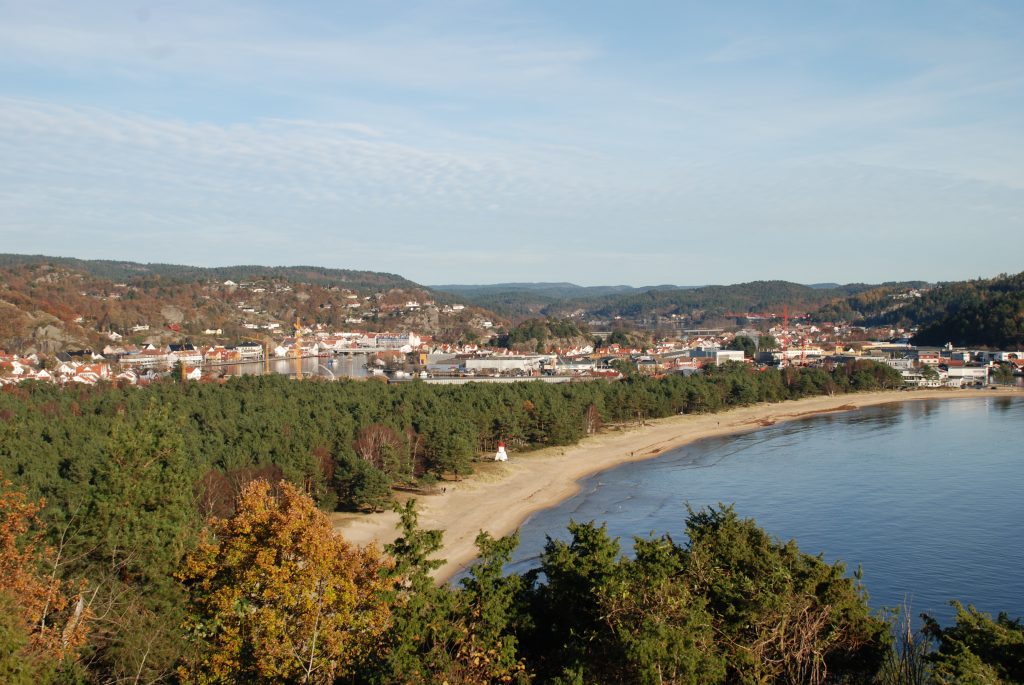
The very first advertisement for Norway was produced by the Norwegian railway, NSB, in 1905 and illustrated the midnight sun, Norwegian mountains and a stave church. The national romantic image of Norway was soon noticed abroad.
Related: Perceptions of Norway as a Holiday Destination
Mass-tourism slowly taking place But Norway didn’t become a country for mass tourism after the second world war and the beginning of mass tourism. This form of tourism focused on the southern periphery of Europe. And it was not expected that Norway was going to be a land for mass tourism. In view of the climate of the country, the lack of sandy beaches – there are only a few near Mandal at the Stavanger coast and in the southwest of Stavanger which are touristically developed – and of course the high prices for services of all kinds, Norway was more a country for individualism.
But in the time when car and plane became mass transportations, Norway experienced a real annual “invasion” of foreign tourists. In 1965 more than 5 million tourists visited Norway, tourists, which brought ca. 750 million NOK in the country. Numerical on top were Scandinavians (2,9 mill.) However, the Swedish car-tourist comes mainly for camping, and the Danes for skiing during the winter.

Skiing is the national sport in Norway and became popular because of among others explorer Fridtjof Nansen from this time. The mountain hotels had a second season due to the winter sport while the hotels near the fjords had the problem of only a short period during the summer. Most of the bigger hotels are in the mountains of Østlandet.
Improving traditional tourism products Although nature is still Norway’s key selling point to foreigners, a lot has changed in how Norway is marketed abroad. Whereas the typical tourist used to be a passive observer of nature, today’s travelers want experiences that make them connect with nature, including domestic culinary dishes, historical destinations, Scandinavian interior design and art.
According to an international trend, the sector of city trips and event-tourism is growing and the aim of the Norwegian Tourist Board is to improve the traditional tourism products and at the same time develop the sector of events and new holiday activities.
A new Discovery Route was launched in 2013. Now it is time to bring back the success of the former destinations and invite new visitors to travel in the footprints of the pioneers from the 1880s in a much more comfortable and updated way.
Feature image (on top): From the Discovery Route
A Short History of Tourism in Norway, written by Tor Kjolberg
- People and culture
A History of Tourism in Norway

Get to know the Norwegians

Sign Up Today
Start your 14 day free trial today

History Hit Story of England: Making of a Nation
10 Must-See Historic Sites in Norway
Set amidst stunning fjords and snow-topped mountains, explore the history of vikings, witch trials and more in our guide to the 10 must-see historic sites in norway..

Peta Stamper
02 sep 2021.
Occupying the westernmost part of Scandinavia, Norway is a beautiful and mostly mountainous country boasting fjords and glaciers – as well as a long and fascinating history. People settled near the current capital of Oslo almost 6,000 years ago, as well as other coastal areas that have become the cities of Bergen and Trondheim.
Norwegians largely depended on fishing and farming into the Viking era, when Norse raiders began exploring – and raiding – Britain, western Europe, Russia, Iceland and Greenland. In the Middle Ages, Norway was dominated by its neighbours Sweden and Denmark, only gaining its independence in 1905, when it emerged as a major maritime power.
From the unique design of medieval stave churches to the setting of sinister witch trials during the 17th century, Norway has a fantastic range of historic sites to visit. To help you get started, here are 10 must-see historic locations to explore in Norway.

1. Norwegian Royal Palace
The Norwegian Royal Palace was begun on 1 October 1825 and inaugurated in 1849. Intended as a home for King Carl Johan, it would never serve this purposes as it was only completed after his death. It was designed by Hans Ditlev Franciscus Linstow.
Over the years, the Norwegian Royal Palace has undergone a series of alterations and changes, mostly to modernise it for living purposes. Guided tours of the palace last around an hour and the changing of the guard takes place daily.

2. Oslo Cathedral
Oslo Cathedral (Oslo Domkirke) is a 17th century Dutch Baroque style church in a cruciform shape.
After a great fire in 1624 which destroyed the city’s former main cathedral, Hallvards Cathedral, King Christian IV decided to move the city a few kilometres west in order to be protected by the Akershus Fortress.
Today, visitors can admire the stunning cathedral which symbolises a blend of Oslo’s both old and contemporary history, architecture, and artwork.

3. Akershus Fortress
Akershus Fortress (Akershus Festning) has been a vital stronghold and royal residence in Oslo, Norway , since the 14th century. Over the centuries, different figures put their mark on Akershus Fortress including King Christian, although it would suffer from neglect in the 17th and 18th centuries.
Today, there’s plenty to see at Akershus Fortress. The castle boasts everything from the former living quarters of medieval Danish-Norwegian royalty to dank dungeons and also the castle church, now a military church. Akershus Fortress is also home to the Armed Forces Museum and Norway’s Resistance Museum , particularly significant considering the site’s ties to the Nazi occupation.

4. Urnes Stave Church
Norway’s Urnes Stave Church (Urnes Stavkirke) is a well-preserved and oldest surviving example of medieval wooden architecture, meaning that it is the only stave church to be listed as a UNESCO World Heritage site. Today, it is one of Norway’s most popular tourist attractions.
The word ‘stave’ (or ‘stav’ in Norwegian) means sturdy wood columns that are the corner posts and columns which uphold the overall architectural structure of a building.

5. Kristiansand Canon Museum
The Kristiansand Cannon Museum stands at the site of the Møvik Fort, Norway, a huge defence battery built by the Germans during their occupation of Norway and Denmark during the World War Two .
Today, visitors to the site can explore the wider complex, delve into bunkers and tunnels, and of course, see the main gun itself, still in its original casement. The ‘Fortress Trail’ guides people around the complex and includes a number of exhibitions explaining the history and operation of the stronghold.

6. Nidaros Cathedral
Considered a national shrine, Nidaros Cathedral in Trondheim is one of the most prominent cathedrals in Norway and was built over the burial site of Olav Haraldsson, later St. Olav, the first Christian king of Norway.
Nidaros Cathedral remains a popular attraction with both pilgrims and tourists and boasts hundreds of thousands of visitors every year.
The main façade of the cathedral is found on its western side and boasts a huge rose window surrounded by ornate statues and stained glass decoration. Inside, these windows can be seen in their true glory with their vibrant colours providing an impressive spectacle.

7. Steilneset Memorial
The Steilneset Memorial in Vardo, Norway’s easternmost town, is an incredible major artwork by Louise Bourgeois and architect Peter Zumthor commemorating the trail and execution of 91 people accused of witchcraft in 1621. During the 17th century, a series of witchcraft trials took place in Norway, with Vardo seeing the highest number of executions.
Inaugurated 348 years after the most notorious trials, the Steilneset Memorial installation dominates the dramatic landscape of Vardo. The memorial was commissioned by the people of Vardo as well as several national bodies, and comprises two separate buildings.

8. Roldal Stave Church
Roldal Stave Church – Roldal Stavkyrkje – is a picturesque wooden church in Vestland, Norway , and dates back to around 1250 AD. Today, visitors still flock to Roldal Stave Church, Norway’s only church of this kind to act as a working church.
During the middle ages, pilgrims travelled in great numbers to the Roldal Stave Church to see the wondrous crucifix reported to have healing powers and dating back to the church’s foundation. As pilgrimages continued until 1835, longer than elsewhere in Norway, the small village of Roldal became quite prosperous.

9. Rock Art of Alta
Located in Finnmark, the northernmost region of Norway, the Rock Art of Alta comprises over 6,000 fascinating prehistoric carvings some of which dating back to 4200 BC.
Today, as well as wandering the wooden walkways and interpreting for yourself what the incredible, red rock carvings might mean, you can visit the World Heritage Rock Art Centre or Alta Museum, which displays objects relating to the prehistoric peoples responsible for the rock art at Alta – including the indigenous Sami culture.

10. Bryggen
Bryggen meaning ‘the dock’ in Norwegian is a series of picturesque Hanseatic heritage buildings lining the Vågen harbour in Bergen, Norway. The city of Bergen was founded around 1070, but Bryggen has only been a UNESCO World Heritage Site since 1979.
Today, the notable and colourful buildings in Bryggen still stand, including the 300 year-old Bellgården and the oldest, tallest building in the area, St Mary’s Church.
The Norwegian Museum of Travel and Tourism
The Norwegian Museum of Travel and Tourism is a unique, digital and modern museum that delves into the history and development of leisure travel in Norway.
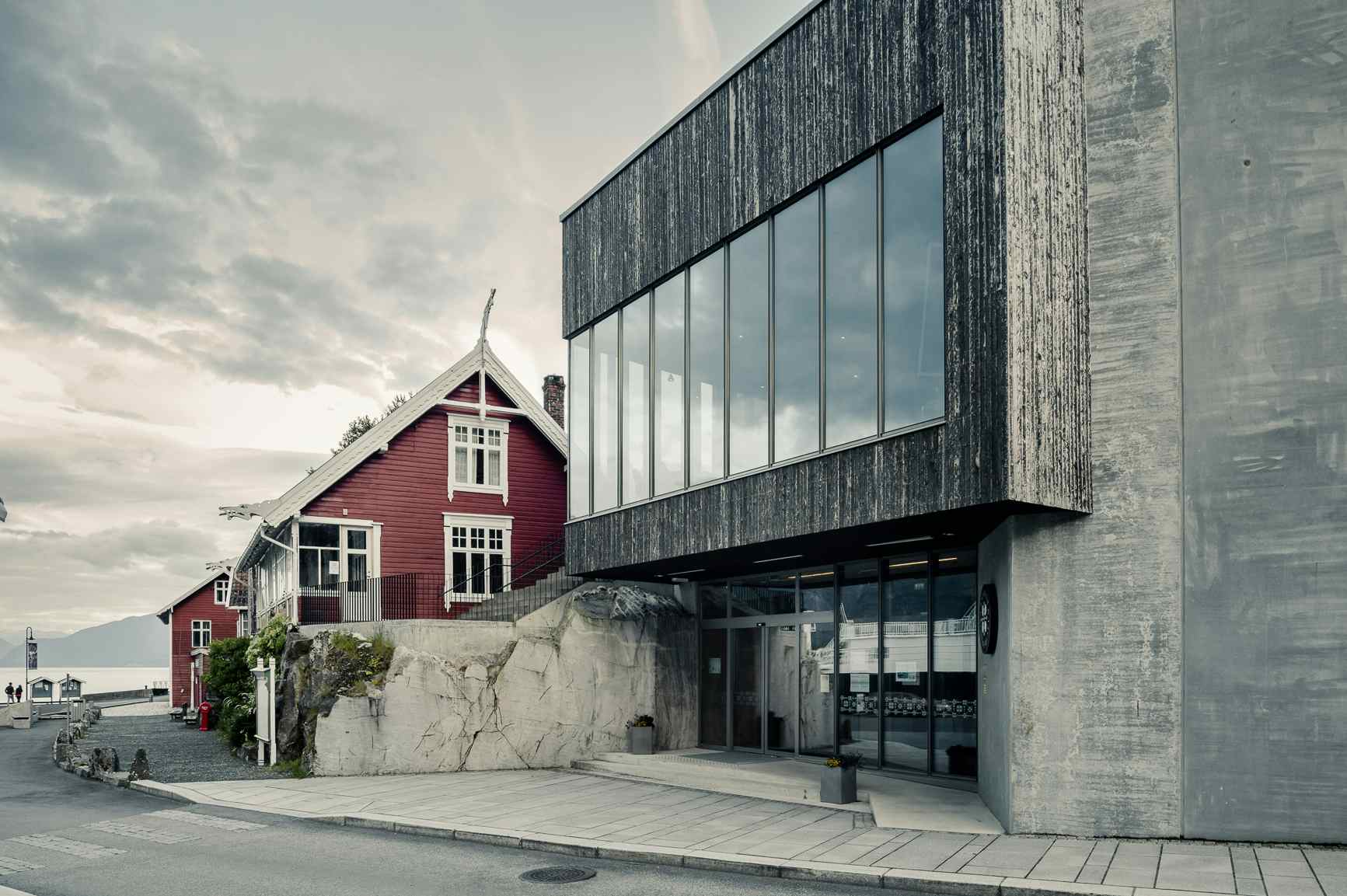
Today, Norway ranks among the world's great travel destinations. The history of how this came to be is as much the story of the development of a national image, as it is one of tourism. For centuries, Scandinavia had been seen as the periphery of Europe; rugged, remote and foreign. The painters, scholars, anglers and mountaineers that ventured north, discovered their paradise in the Norwegian nature. Much has changed since the days of these pioneers. However, the same experiences that beckoned them still draw contemporary travellers to Norway's landscape. The dramatic and astonishing scenery has not only been the backdrop for pastoral romanticism, but has also increasingly become a main attraction in itself. At the Norwegian Museum of Travel and Tourism, we explore and convey the fascinating story from wilderness to World Heritage. The exhibitions at the museum provide a comprehensive overview of the development of travel and tourism in Norway, the roots of tourism in Balestrand, the historical artists' colonies of Europe and Balestrand, and the opportunity to visit an original dragon style building – the former residence of the English painter Alfred Heaton Cooper. Carved into the ancient Norwegian bedrock, the museum is spectacularly situated in a state of the art building. Short films pertaining to travel and Norway are shown in the auditorium throughout the day – our most popular by far being the dramatic documentary about the female Norwegian aviation pioneer Gidsken Jakobsen Coffee, tea, locally made beverages and homemade cakes, sandwiches and more are served in Vindreken Café. Enjoy the meal and the astonishing view of the Sognefjord!
- 6899 Balestrand
Where is The Norwegian Museum of Travel and Tourism ?
Norway recorded a total of one million tourists in 2020, ranking 82nd in the world in absolute terms.In 2020, Norway generated around 2.20 billion US dollars in the tourism sector alone. This corresponds to 0.46 percent of its the gross domestic product and approximately 24 percent of all international tourism receipts in Northern Europe.
- Sognefjord: Norway's Largest Fjord
- Pulpit Rock (Preikestolen)
- Norway's Arctic City: Tromsø
- Take a Trip to the Lofoten Islands
- Bygdoy Peninsula, Oslo
- Bryggen Hanseatic Wharf, Bergen
- Tromsø's Arctic Museums
- Vigeland Sculpture Park, Oslo
- Akershus Fortress, Oslo
- The Olympic Town of Lillehammer
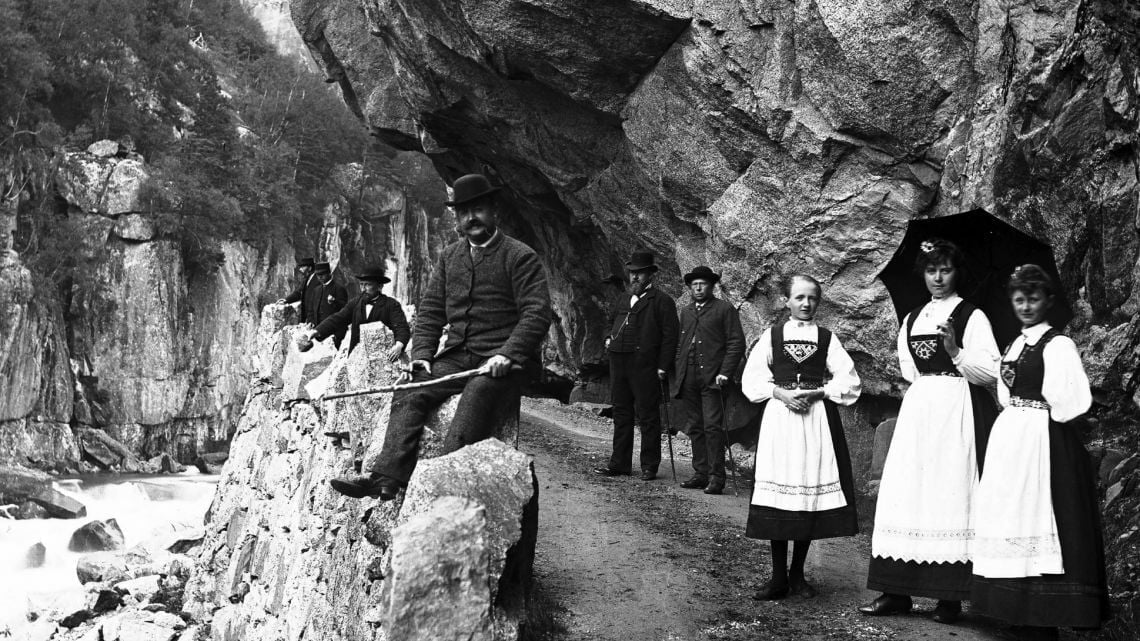
More than 100 years of travel history
In the 1880s the travel agency Thomas Cook, created the Discovery Route as the very first package holidays to be sold in Fjord Norway. The first explorers of the Discovery Route travelled by horse and carriage, and by steamboats on the fjords and the inland lakes. The route was also marketed as «The new inland Route» by the Stavanger tourist association. The famous traveller, explorer and writer E. J. Goodman travelled the route in the 1890s, and wrote the book called “The best tour of Norway”.
The highlight of the Discovery Route was then, as now, the wild and unspoiled nature at the southern entrance of Fjord Norway. When tourist first started coming to Norway in the 1820-1830s, there were no hotels. The travellers stayed at coaching inns and at the rectories. In the 1880s the tourism industry had grown, and along the Discovery Route you could find several venerable hotels in the smaller villages, many in Swiss style.
The travellers on the Discovery Route was mainly rich Englishmen, but late in the 19th century the English middle class also started coming. Besides the Englishmen there were also travellers from Germany and other European countries.
E. J. Goodman describes the route from Stavanger to Bergen in great details. He travelled by steamer from Stavanger to Sand, from there with horse and carriage to Suldalsosen where there were two hotels at the time. The travel went on by the small steamboat MS Sulldalsdampen on the inland lake Suldalsvatnet to Nesflaten which had three hotels. From there with horse and carriage threw the famous Bratlandsdalen to Røldal and Odda. The road though the valley of Bratlandsdalen opened in 1890. Before that the travelers had to walk through the valley.
Odda was the center of tourism in Fjord Norway at this time. There were 12 hotels in different sizes, with the flag ship; Hotel Hardanger being the biggest hotel and wooden building in Norway at the time. 70 – 80 cruise ships visited Odda every summer, and from 1861 there were steamboat routes going from Bergen to Odda and Stavanger to Odda. According to E. J. Goodman, the steamboat trip from Bergen to Odda took 13 hours.
In 1906 the power station in Tyssedal, once the largest power station in Europe, was built. Several factories were built in Odda and the industrialization of the picturesque little village began.
From Odda E. J. Goodman continued his travel on the Discovery Route, by steamboat to Eide (today Granvin), and from there with horse and carriage past Skjervsfossen to Voss. The railroad
from Voss to Bergen called “Vossebanen” opened in 1883, and travelers could therefor end their journey from Stavanger to Bergen taking the train the last bit. The railroad from Voss to Oslo finished in 1909, and we had a railroad connecting the two biggest cities in Norway, Bergen – Oslo.
The Discovery Route was a great success, until the first world war put an end to the tourism along the route. In 2013 it was time to bring back the success, in form of the new Discovery Route, inviting you to travel in the footprints of the pioneers from the 1880s.
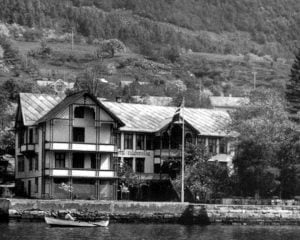
- Haukali 33/3
- Allsupermoto
- Åkrafjorden adventures
- Trolltunga Active
- Lilland Brewery Hotel
- Hotel Ullensvang
- Bergen Base Camp
- Voss Active
- Outdoorlife Norway
- Mo Laksegard
- Fjord Events
- Fleischer´s Hotel
- Sola Strand Hotel
- Kronen Gaard
- Energihotellet

The Norway Experience: Nature, Culture & Travel Recommendations
A journey through norwegian history: from vikings to modern times.
Norwegian history is filled with captivating tales of courageous explorers, rich cultural traditions, and transformative historical events. In this article, we will delve into some of the most essential aspects of Norway’s past, shedding light on how this Nordic nation became what it is today.
Table of Contents
History of Norway Timeline: Key Moments and Events
The history of Norway spans thousands of years, but some key moments and events have played a significant role in shaping the nation we know today. These include the following:
- The Viking Age (c. 793–1066): During this period, Norwegian Vikings ventured across vast areas of Europe, earning a reputation as formidable warriors and skilled seafarers.
- The Union of Kalmar (1397–1523): Norway, Denmark, and Sweden formed a political union that lasted over a century, ultimately leading to Norway becoming a subordinate partner to Denmark.
- The Napoleonic Wars (1803–1815): After the conclusion of these conflicts, Norway was ceded to Sweden in the Treaty of Kiel in 1814. This marked the beginning of a short-lived period of independence and the drafting of the Norwegian constitution.
- The Union with Sweden (1814–1905): For nearly a century, Norway was in a union with Sweden, maintaining its institutions but sharing a king. This period ended peacefully with the dissolution of the union in 1905.
- World War II (1939–1945): Norway was occupied by Nazi Germany during the war, which led to a resistance movement and, eventually, liberation by the Allies in May 1945.
- Post-war period and modern times: Norway has since become a prosperous and peaceful nation, known for its high living standards, social welfare, and natural resources like oil and gas.
Vikings in Norway: Explorers, Warriors, and Settlers
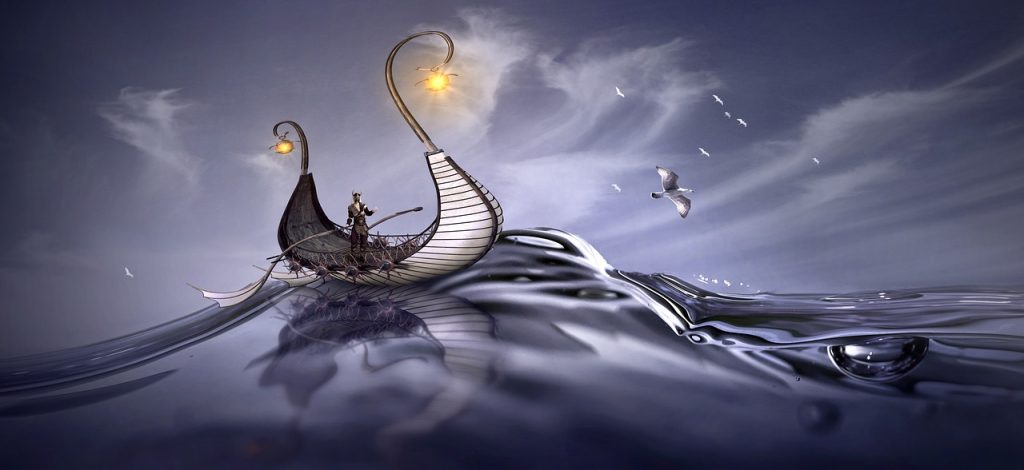
The Vikings were an integral part of Norwegian history. These seafaring people ventured far and wide in search of trade, land, and new opportunities. Notorious for their military prowess, the Vikings left a lasting impact on European history, conquering and settling in regions such as the British Isles, France, and Russia. While the Viking Age was marked by violence and conquest, it also facilitated significant cultural exchange and trade.
Norwegian Kings and Queens: The Monarchy Through the Ages
Norway has a long history of monarchy, with several notable kings and queens who have left their mark on the nation. Among them are:
- Harald Fairhair (c. 850–c. 932): Often considered the first king of Norway, Harald is credited with uniting many smaller kingdoms under his rule.
- Olav II Haraldsson (995–1030), also known as St. Olav: As a patron saint of Norway, Olav played a significant role in the country’s conversion to Christianity.
- Queen Margaret I (1353–1412): As the ruler of Denmark, Norway, and Sweden, Margaret helped form the Kalmar Union, which united the three kingdoms for more than a century.
- King Haakon VII (1872–1957): The first king of independent Norway following the dissolution of the union with Sweden, Haakon was a symbol of national unity and resistance during World War II.
Norwegian Historical Landmarks: A Glimpse Into the Past
Norway is home to many historical landmarks that offer insights into the nation’s rich past. From ancient stave churches and Viking burial mounds to impressive fortresses and royal residences, these sites provide a tangible connection to Norway’s history and cultural heritage.
By exploring these different aspects of Norwegian history, we can gain a deeper understanding of the events, people, and forces that have shaped this remarkable Nordic nation. Whether it’s the intrepid spirit of the Vikings, the struggles of past monarchs, or the resilience of the nation during times of conflict, Norway’s history offers valuable lessons and unique perspectives on the world we live in today.
Norwegian Cultural History: Traditions and Influences
Norwegian cultural history is rich and varied, with influences from both its indigenous Sami population and the many nations with which it has interacted throughout the centuries. Art, music, literature, and folklore all contribute to the tapestry of Norwegian culture, which continues to evolve and adapt to modern times. Traditional Norwegian crafts, such as woodcarving and rosemaling (decorative painting), have been passed down through generations, while Norwegian folk music and dance continue to thrive in rural communities.
Norwegian Exploration and Expeditions: Pioneers of the Arctic
Norwegians have long been known for their exploration and expeditions, both during the Viking Age and in more recent history. Some notable Norwegian explorers include:
- Fridtjof Nansen (1861–1930): A renowned scientist, humanitarian, and explorer, Nansen made significant contributions to Arctic exploration and research.
- Roald Amundsen (1872–1928): Amundsen was the first person to reach both the North and South Poles, solidifying Norway’s reputation as a leader in polar exploration.
These explorers not only expanded our understanding of the world’s most remote regions but also inspired future generations to push the boundaries of human knowledge and achievement.
Famous Norwegians in History: Icons and Innovators
Throughout history, many Norwegians have made significant contributions to various fields, from science and exploration to the arts and sports. Some famous Norwegians include:
- Henrik Ibsen (1828–1906): A groundbreaking playwright and theatre director, Ibsen is the father of modern drama.
- Edvard Grieg (1843–1907): A celebrated composer and pianist, Grieg’s music has become synonymous with Norwegian nationalism and Romanticism.
- Edvard Munch (1863–1944): One of the most influential painters of his time, Munch is best known for his iconic work, “The Scream.”
By examining the lives and achievements of these notable individuals, we can appreciate the impact that Norwegians have had on the global stage and the enduring legacy they have left behind.
In conclusion, the rich tapestry of Norwegian history offers a wealth of insights into the nation’s past, from its earliest beginnings to its modern-day successes. By exploring the various facets of this compelling story, we can better understand the unique character and enduring spirit of the Norwegian people.
The Sami People: Norway’s Indigenous Culture
A rich cultural heritage spanning thousands of years.
The Sami people, sometimes referred to as Laplanders, are the indigenous inhabitants of the northern regions of Norway, Sweden, Finland, and the Kola Peninsula in Russia. With a history dating back thousands of years, the Sami have a rich cultural heritage that includes traditional reindeer herding, distinctive handicrafts called “duodji,” and the unique Sami language with its multiple dialects.
Challenges and Preservation of Sami Culture
Sami culture has faced challenges over the years, with efforts to assimilate the Sami people into the dominant Scandinavian culture, land disputes, and the encroachment of modern society on traditional ways of life. However, the Sami have persevered and are now recognized for their unique contributions to Norwegian culture, with increased efforts to preserve their language, traditions, and rights as indigenous people.
See more: Sami Culture in Norway: A Deep Dive into an Indigenous Legacy
The Norwegian Resistance Movement During World War II
The emergence of the norwegian resistance movement.
During World War II, Norway was occupied by Nazi Germany from 1940 to 1945. In response to this occupation, a Norwegian resistance movement emerged, which played a crucial role in undermining the German war effort and ultimately contributing to the liberation of Norway.
The resistance movement consisted of various groups, including the “Milorg” (military organization), the “Hjemmefronten” (home front), and various intelligence networks. These groups carried out acts of sabotage, collected intelligence, and provided support to the Allies.
The Heroes of Telemark: A Pivotal Moment in the Norwegian Resistance
The Norwegian resistance movement’s efforts culminated in the successful sabotage of the heavy water production facility at Vemork in 1943, which was crucial in preventing the development of a German atomic bomb. This event, known as the “Heroes of Telemark” operation, remains a source of national pride and a testament to the bravery and determination of the Norwegian people during a challenging time in their history.
The Discovery of Oil and Gas in Norway: A Modern Success Story
The discovery of oil and gas in the North Sea in the late 1960s and early 1970s marked a turning point in Norway’s history, transforming the nation into one of the world’s leading energy producers. The development of the oil and gas industry has had a profound impact on Norway’s economy, infrastructure, and society.
Managing Norway’s Oil Wealth: The Government Pension Fund Global
The Norwegian government has played an essential role in managing the nation’s oil wealth, establishing the sovereign wealth fund, also known as the Government Pension Fund Global. This fund, one of the world’s largest, is designed to secure long-term financial stability for future generations and ensure that the benefits of Norway’s oil and gas resources are shared among its citizens.
Environmental Responsibility and Sustainable Development in Norway
While the oil and gas industry has brought prosperity to Norway, it has also highlighted the need for environmental responsibility and sustainable development. As a result, Norway has become a global leader in renewable energy, with ambitious goals for reducing greenhouse gas emissions and promoting clean energy alternatives.
The Significance of Norway’s History: A Blend of Ancient Traditions and Modern Innovation
In summary, Norwegian history is a fascinating blend of ancient traditions, courageous exploration, and modern innovation. By examining the many aspects of this Nordic nation’s past, we can better understand its unique identity and the spirit of its people. From the Viking Age to the present day, Norway’s history serves as a testament to the resilience, determination, and ingenuity of those who call it home.
The Norwegian Constitution and National Day
May 17th is a significant date in Norwegian history, as it marks the signing of the Constitution of Norway at Eidsvoll in 1814. This event laid the foundation for Norway’s modern parliamentary system and established the nation’s independence from Denmark. Today, May 17th is celebrated as Norway’s National Day, or “Syttende Mai,” and is a source of national pride and unity.
National Day festivities include parades, traditional costumes called “bunads,” and various events that showcase Norwegian culture and history. The celebration is an opportunity for Norwegians to express their patriotism and reflect on the country’s journey toward independence and democracy.
The Norwegian Language: A Rich Linguistic Heritage
Origins and forms of the norwegian language.
The Norwegian language is a North Germanic language that shares many similarities with Danish and Swedish. It has a rich linguistic history, with roots in Old Norse, the language spoken by the Vikings. Today, there are two official forms of written Norwegian: Bokmål and Nynorsk.
Bokmål and Nynorsk: Norway’s Official Written Forms
Bokmål, the more widely used of the two forms, is closely related to Danish due to Norway’s historical ties with Denmark. Nynorsk, on the other hand, was developed in the 19th century as an effort to create a written language that was more reflective of Norwegian dialects and less influenced by Danish. Both forms are used in education, media, and government, and Norwegians are generally able to understand and communicate in both.
Regional Dialects: Preserving Norway’s Linguistic Heritage
In addition to Bokmål and Nynorsk, Norway is home to a diverse range of regional dialects, which are spoken and cherished by communities across the country. The preservation and promotion of these dialects contribute to Norway’s rich linguistic heritage and cultural diversity.
The Norwegian Fjords: A Natural Wonder

Norway’s landscape is renowned for its breathtaking fjords, which are steep, glacially-carved valleys filled with seawater. These stunning formations are the result of millions of years of geological processes and are among the country’s most iconic and beloved natural features.
Exploring the Fjords: Tourism and Unique Attractions
The fjords attract millions of tourists each year, who come to marvel at their beauty and experience the unique activities and attractions they offer. Popular fjords include Geirangerfjord , Nærøyfjord, and Sognefjord, which are all part of the West Norwegian Fjords UNESCO World Heritage Site. Visitors can explore the fjords by taking scenic cruises, hiking along picturesque trails, or visiting charming villages nestled along the fjord’s shores.
The Role of Fjords in Norwegian History and Culture
The fjords also hold cultural significance for Norwegians, as they have been home to communities and trade routes for centuries. The fjords have played an essential role in shaping Norwegian history, and their continued preservation is vital for the country’s natural beauty and cultural heritage.
Norwegian History: A Rich Tapestry of Exploration, Resilience, and Innovation
In conclusion, the diverse and captivating aspects of Norwegian history provide a fascinating lens through which to understand this Nordic nation’s past and present. From ancient times to modern achievements, the story of Norway is one of exploration, resilience, and innovation. By appreciating the rich tapestry of its history, we can develop a deeper understanding of the unique character and spirit of the Norwegian people, who continue to make their mark on the world.
The Hanseatic League and Bergen: A Flourishing Trade Center
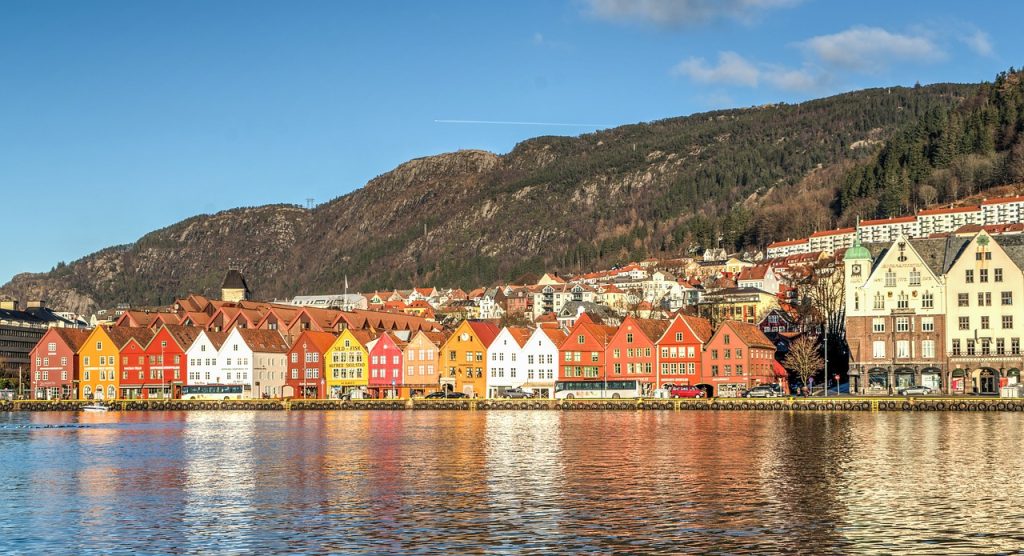
Between the 14th and 16th centuries, the Hanseatic League – a powerful confederation of merchant guilds and market towns – played a significant role in shaping Norway’s economic and political landscape. Bergen , Norway’s second-largest city, became a vital trade center within the Hanseatic League, and its port, Bryggen, was a bustling hub of commerce and cultural exchange.
The Role of Bergen and Bryggen in the Hanseatic Trade Network
The Hanseatic merchants, mainly from Germany, established a thriving trade in fish, particularly stockfish (dried cod), which was in high demand across Europe. In exchange, they brought essential goods such as grains, textiles, and other commodities to Norway. This trade network had a lasting impact on Norwegian society, fostering economic growth and shaping the nation’s urban development.
Bryggen: A UNESCO World Heritage Site Reflecting Norway’s Hanseatic Past
Today, the historic district of Bryggen in Bergen stands as a UNESCO World Heritage Site, with its colorful wooden buildings providing a glimpse into the city’s rich Hanseatic past. Visitors can stroll through the narrow alleyways, explore the old merchant houses, and learn about the fascinating history of this once-thriving trade hub.
The Legacy of the Hanseatic League in Modern Norway
The influence of the Hanseatic League can still be felt in modern Norway, as it played a crucial role in the nation’s economic and cultural development. The legacy of this powerful trade network highlights the importance of international cooperation and exchange, which continue to drive progress and innovation in Norway and beyond. By preserving and celebrating its Hanseatic heritage, Norway honors the spirit of entrepreneurship and collaboration that has shaped its history.
Offical website: https://en.visitbergen.com
The Stave Churches: Architectural Treasures from the Middle Ages
The stave church is one of the most unique and iconic elements of Norwegian history and architecture. These wooden churches, dating back to the Middle Ages, feature intricate carvings, post-and-beam construction, and stunning design elements that blend Christian motifs with traditional Norse art styles.
At their peak, there were likely more than 1,000 stave churches in Norway. Today, only 28 remain, with the oldest – Urnes Stave Church – dating back to around 1130. These remarkable structures serve as important links to Norway’s medieval past and showcase the craftsmanship and artistry of the era.
Visiting a stave church is a fascinating journey into Norwegian history, offering insights into the nation’s spiritual and cultural heritage. Preservation efforts continue to ensure these architectural treasures remain for future generations to appreciate and explore.
Official website: https://www.stavechurch.com/
The Nobel Peace Prize: Norway’s Commitment to Peace and Diplomacy
Instituted by the will of Swedish inventor and industrialist Alfred Nobel, the Nobel Peace Prize has been awarded annually since 1901. While the other Nobel Prizes are presented in Sweden, the Peace Prize is awarded in Oslo , Norway, a testament to the nation’s commitment to peace and diplomacy.
Honoring Contributions to Peace and Conflict Resolution
The Nobel Peace Prize honors individuals and organizations that have made significant contributions to peace and conflict resolution, highlighting Norway’s role as an advocate for peace and international cooperation. The award ceremony takes place each year on December 10th, the anniversary of Alfred Nobel’s death, and is attended by the Norwegian royal family, government officials, and prominent guests from around the world.
Norway’s Dedication to Promoting Peace and Global Collaboration
By hosting the Nobel Peace Prize, Norway reinforces its dedication to promoting peace, understanding, and global collaboration, further solidifying its place on the international stage as a champion for these ideals.
Exploring the Multifaceted History of Norway
In conclusion, the multifaceted history of Norway presents a captivating narrative that encompasses a wide range of topics, from ancient traditions and exploration to modern innovation and diplomacy. By delving into the myriad aspects of this Nordic nation’s past, we can develop a deeper appreciation for the unique character and spirit of the Norwegian people, who continue to shape the world in countless ways.
Official website: https://www.nobelprize.org
- Recent Posts
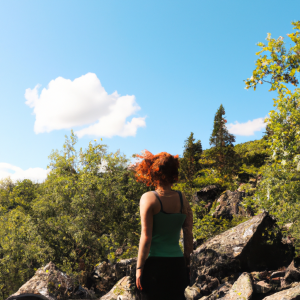
- Norwegian Myths in Modern Media: From Literature to Video Games - August 20, 2024
- Urban Farming in Norway: Green Spaces in the Heart of the City - August 14, 2024
- Norwegian Legends: The Enigmatic Sea Serpent of Seljord - August 13, 2024
Related Posts

Stats for Tourism in Norway (Full 2020/23 Numbers)
Norway’s tourism industry is getting bigger year by year, and contributes significantly to both local and national economy. People are coming from all over the world to experience the unique culture, the amazing nature with the fjords and mountains, and the special atmosphere of the Norwegian cities and towns.
But how many international tourists are visiting Norway per year, how much do they spend, and which nationalities are actually coming to Norway as part of a vacation?
This article is going to be looking closer at all the numbers, figures and statistics for Norway’s tourism industry , including things like number of visitors, their demographics, travel behaviors, and the economic impact of tourism on the country.
Key statistics and figures for tourism in Norway
- Number of international tourists per year : 5.9 million.
- Number of nights spent at accommodation in Norway per year by international tourists : 10.7 million.
- Top 5 countries to visit Norway as tourists ranked : Germany, Netherlands, Sweden, Denmark and the United States.
- Total tourism consumption : 194.3 billion Norwegian kroner (roughly $18.7 billion USD).
- People employed in the tourism sector in Norway : 182,900 people.
- Average sum of money spent per day per tourist : 1,680 NOK ($163 USD).
- Average cost for a family of four to vacation in Norway for one week: 47,040 NOK ($4,500 USD).
- Main tourism season: More than 50 % of all tourists visit Norway between May and August.
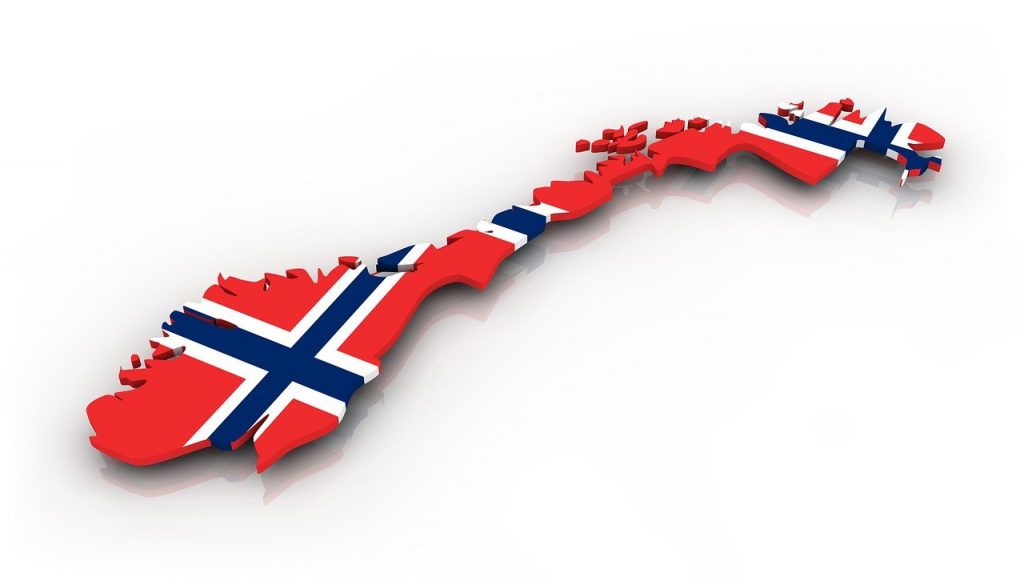
Summary of the statistics for tourism in Norway
The very short summary of tourism to Norway is that we get 5.9 million international tourists per year, who spends a total of 10.7 million nights at Norwegian accommodations. Germany, Netherlands, Sweden, Denmark and the US are the top countries to visit Norway.
Tourists in Norway spend 194.3 billion Norwegian kroner (roughly $18.7 billion USD) per year, which makes for 1.7 % of Norway’s GNP. International tourists are responsible for 59.4 billion NOK of this tourism spending.
The tourism industry in Norway employs over 182,900 people, meaning that around 7 % of the Norwegian population work in a field related to the tourism sector.
PS: Many of the numbers and figures in this article will be from 2019. The reason is simple: all data from 2020 and 2021 is very skewed due to covid restrictions, so the numbers from 2019 are the best numbers to use to give an idea of the actual numbers when everything is normal. Some stats have updated numbers for 2022 as well, which are fairly close to the 2019 numbers, but not all stats for 2022 are available as of March 2023.
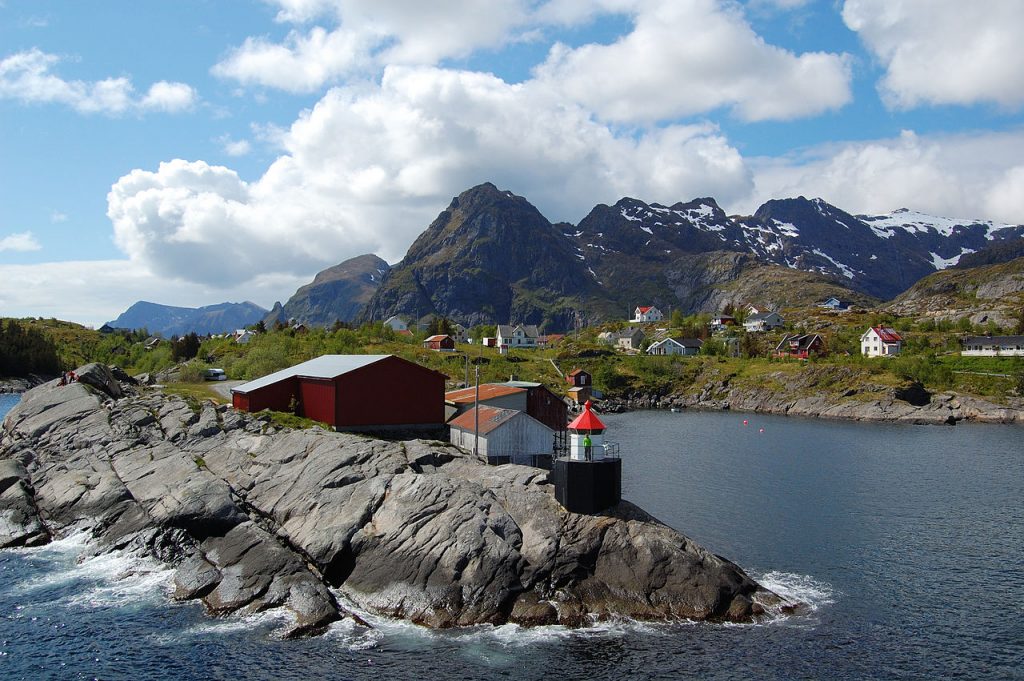
Table of Contents
Number of international tourists to visit norway in 2019.
The actual number of non-Norwegian people to visit Norway during a full year can be a good indication on how attractive Norway is to international tourists.
Norway had 5.9 million international visitors enter the country in 2019, counting all points of entry other than visa-free entry by car.
The same numbers for 2020 and 2021 are 1.39 million and 1.43 million – clearly much lower than in 2019. And covid with all its restriction on travel is obviously the one to blame for this huge decline.
The official number of international tourists to enter Norway in 2022 is not yet publicly known. Please also be aware that it’s not possible to tell from the numbers if the people who enter the country are in fact tourists, or have other business in Norway.
Number of nights spent at accommodations in Norway from foreign tourists in 2022
Another good indicator to how healthy the tourism industry in Norway is, is to look at the number of nights spend at any Norwegian accommodation by non-Norwegian citizens. All hotels, hostels, campsites and other accommodation facilities report in where their visitors are coming from, giving a pretty good number on it.
The number of nights spent at Norwegian accommodation by non-Norwegian citizens were 9,831,299 in 2022, down from 10,701,481 in 2019.
Seeing as Norway has almost 6 million international visitors the same year, the average number of nights spent at a Norwegian accommodation is just under 2 nights.
There could be many reasons for this low number, including stays at private residents (many people are likely coming to Norway to visit relatives, their significant other etc.), at places that do not report who’s staying there (such as AirBnb), or people who spend time wild camping during their stay.
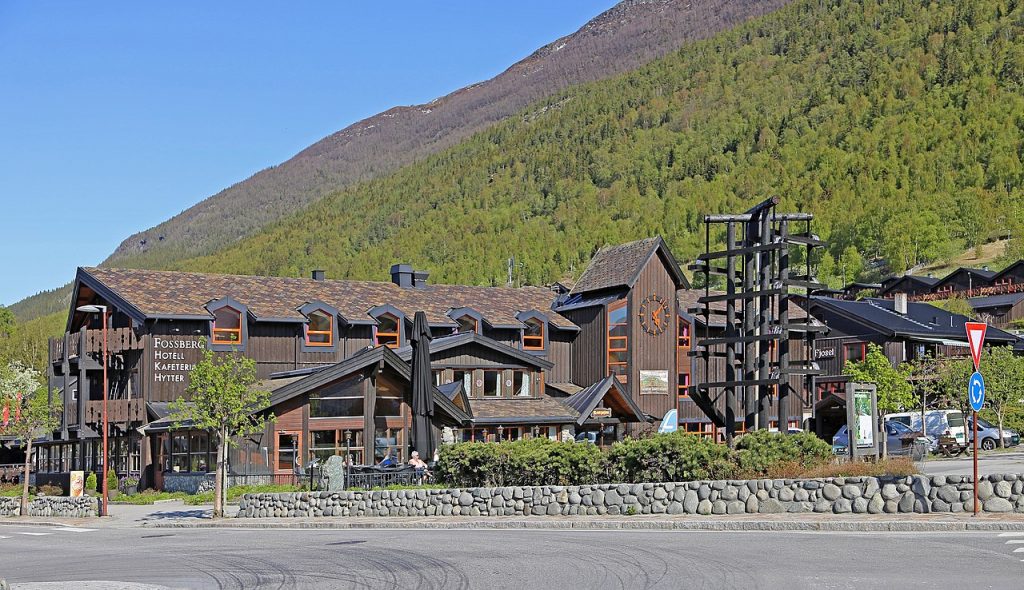
Top countries to visit Norway
When looking at the nationalities of the tourists who are visiting Norway, we see a clear pattern that it’s mainly European tourists who are somewhat close to Norway to visit – with the US being a big exception.
Citizens from the United States of America spend around 820,000 nights in Norway in 2022, down from almost a million back in 2019.
It’s Germany that holds the lead with most nights spent in Norway, with over 2.2 million nights spent at accommodations in 2022. They are followed by citizens from the Netherlands on the 2nd spot, followed by Sweden and Denmark.
The table below shows the top 11 nationalities that have visited Norway and spent nights at Norwegian accommodations in 2022 and 2019:

The economy of Norway’s tourism industry
The money coming to Norway from international tourists is pretty massive, but Norwegians themselves spend the most on the tourism industry in the country.
The entire tourism industry brings in 194.3 billion Norwegian kroner (around $20 billion USD) per year, which is 4.2 % of Norway’s GPN. Out of these 194.3 billions, 59.4 billion NOK is coming from international tourists.
This means that 69 % of the Norwegian tourism economy is from Norwegians themselves, while the remaining 31 % is money coming in from international tourism.
The entire tourism industry employs 182,900 people, which is around 7 % of Norway’s population. Certain tourism-heavy areas (like Lofoten, Flåm etc.) have a much higher number, where over half the population is employed in the tourism sector.
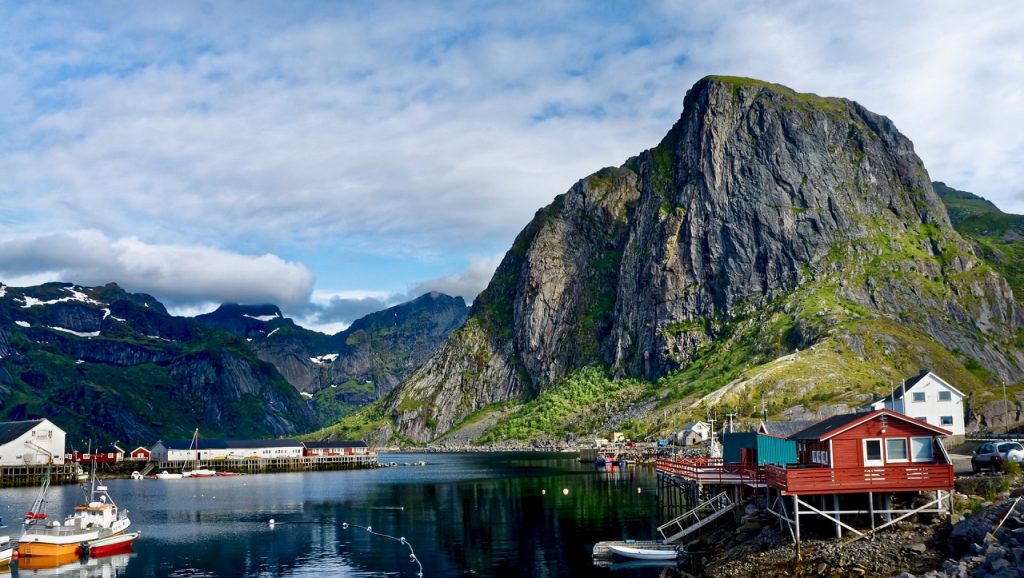
How much tourists spend when visiting Norway
You have probably already heard that Norway is a very expensive country to visit, and you’re absolutely right. But how much money does an average tourist spend when visiting Norway?
On average, each international tourist spend 1,680 NOK ($163 USD) per day, including everything except for flights to and from Norway. Each tourist who visit Northern Norway during winter spends more though, with an average of 2,560 NOK ($250) per day.
The numbers include everything from accommodation and food, to excursions and souvenirs .
While this might not sound like a lot, let’s do some quick calculations to see how much it would cost for a family of 4 to visit Norway for one week:
1,680 NOK * 4 (people) * 7 (days) = 47,040 NOK , which is around $4,500 USD for a family of 4 visiting Norway for one week.
This is obviously the average, and there are many good methods to make your visit to Norway cheaper .
The reason why tourists spend more in Northern Norway is because there is higher demand for hotels and excursions, driving up the costs. There are generally less cheap or budget options if you are visiting Northern Norway during the peak tourist season.
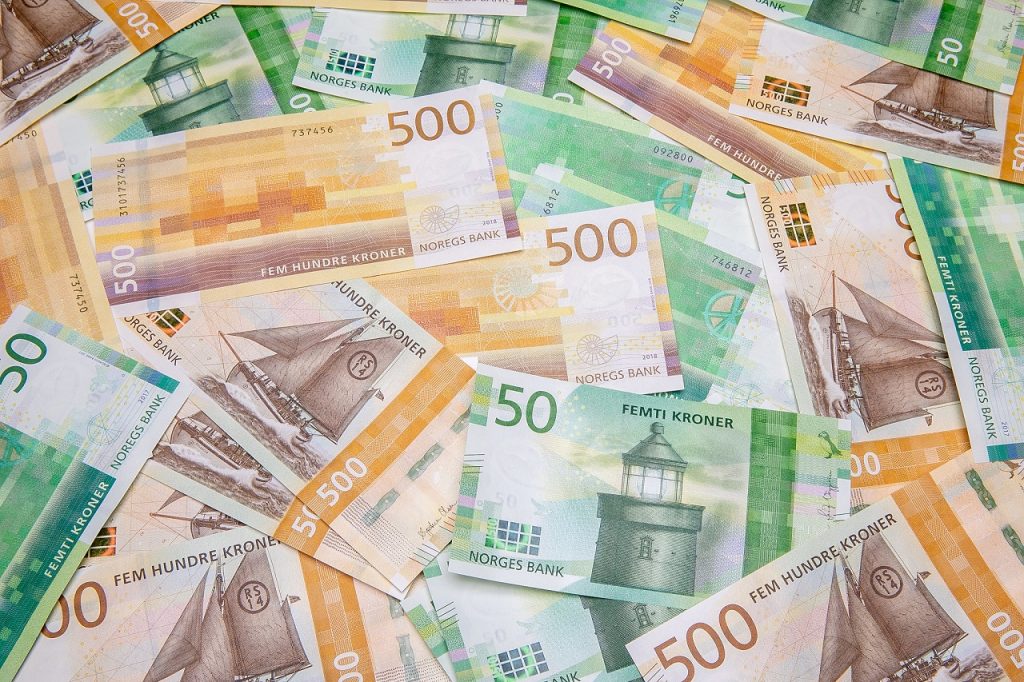
Most visited tourist attractions in Norway
There are hundreds of different tourist attractions all over Norway, but some are obviously much more popular than others.
Below are the most visited tourist attractions in all of Norway, ranked by the number of yearly visitors and grouped into being a cultural or natural attraction:
10 most visited natural attractions in Norway
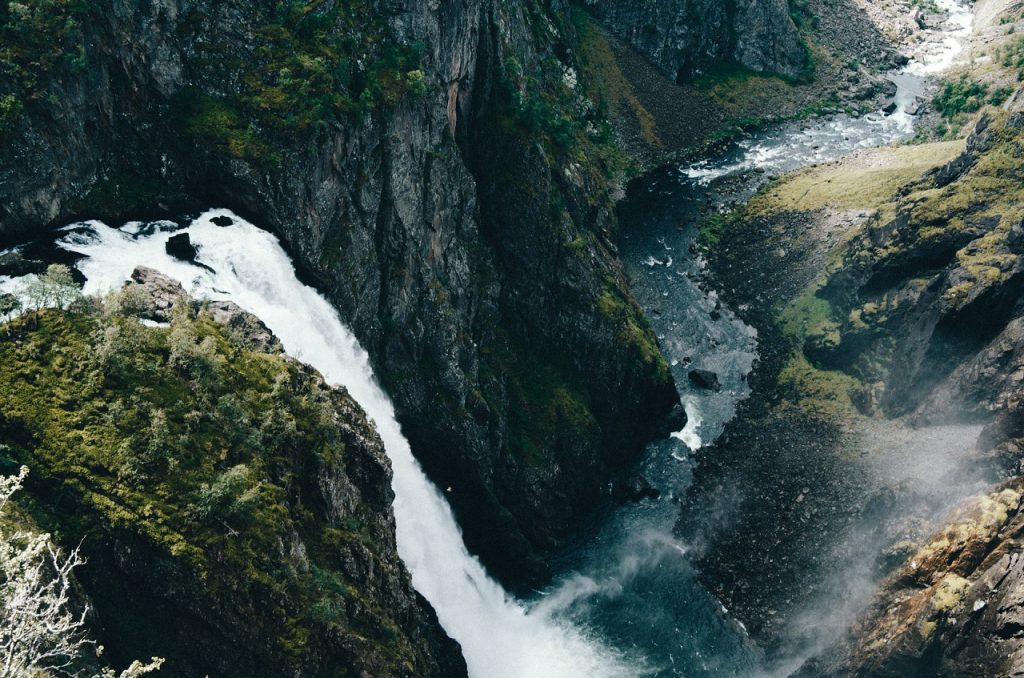
10 most visited cultural attractions in Norway

All the rankings for the most popular cultural and natural tourist attractions are from 2019. They have definitely changed a bit in 2022, but there are currently no official information for 2022 available.
What brings tourists to Norway
We at The Norway Guide has asked out visitors exactly what exactly interests them in Norway, and why they are spending their time reading about the country.
We got a lot of interesting results, but there are 5 clear reasons why tourists want to visit Norway: the nature, the northern lights, the culture and heritage, the viking heritage, and arctic adventures.
Let’s take a closer look at the top reasons why people visit Norway.
1) Norway’s nature and geology: the mountains and fjords
The spectacular beauty of the Norwegian nature is ranked as the number 1 reason why tourists choose Norway as their destination, and I can’t see any reason to disagree.
The nature of Norway is absolutely breathtaking, and photos of fjords and incredible mountains are among the biggest factors to make Norway an attractive destination for tourists.
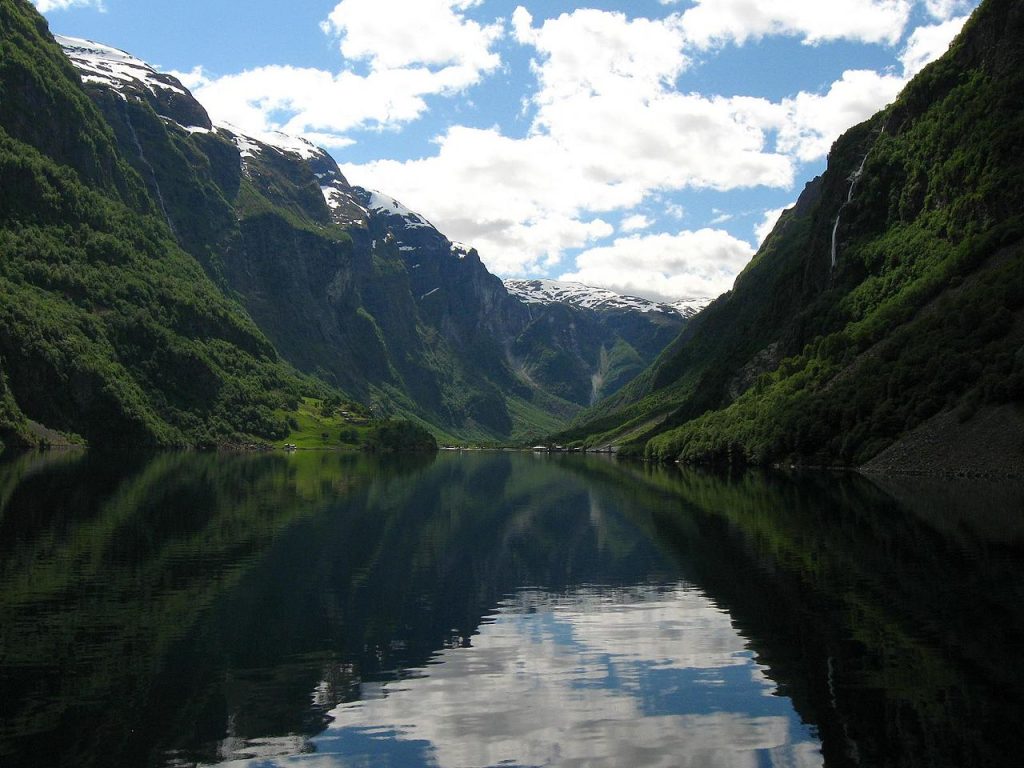
The fjords themselves are the biggest attraction, but people are also very interested in the high amount of untouched nature, as well as the hiking culture and amazing trails in the country.
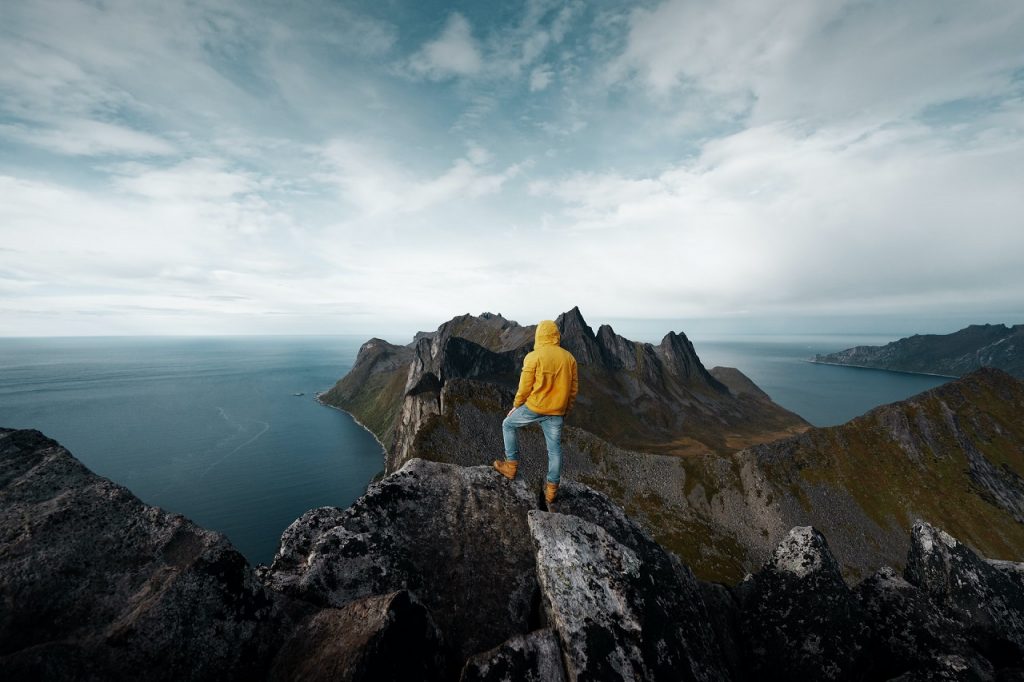
2) The northern lights
The northern lights (also known as aurora borealis ) takes the number 2 spot when it comes to why people are planning to or dreaming about visiting Norway as a tourist.
Even though it’s possible to see the northern lights in all arctic parts of the world, Norway is actually one of the most hospitable places to see it, since the Gulf stream makes Norway much warmer than other areas on the same latitude .
This makes Norway a much better destination for seeing the northern lights compared to Alaska or Siberia (who even wants to go to Russia anymore?).
You can catch a good glimpse of the aurora all winter long, but be aware that it might not show up every single day, and might have days when the clouds are covering it.
However, you’re likely to see it if you spend a week or so in northern Norway.
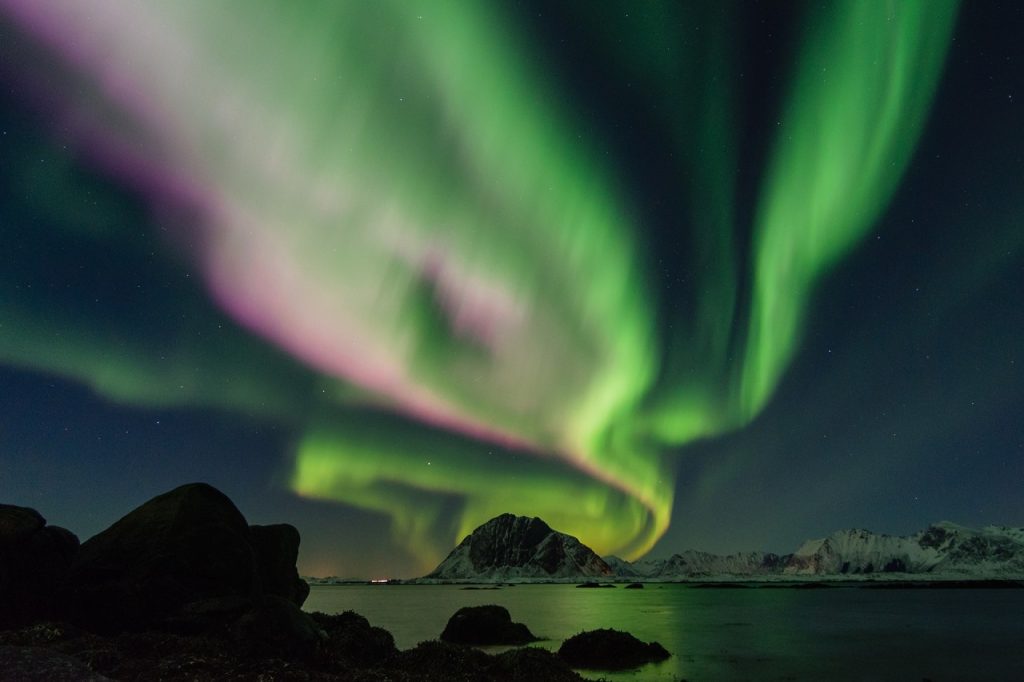
3) Norwegian culture and traditions, or family heritage
The Norwegian culture is something special, and feel exotic to many. If you can get over the myth that we’re all introverts and cold, then the Norwegian culture can really impress you.
There are many unique parts of the Norwegian culture that interest people, even though we apparently have the world’s worst cuisine .

Finding the town of your great great grandparents
Many visitors dream or plan to visit Norway because they have a certain Norwegian heritage. Mostly this is people who had their great great grandparents emigrate from Norway between 1820 and 1920, and want to experience where their family originates from.
I often get messaged by people who are looking to return to their family town or village and need a little help finding it.

Norway is a great place to live
One of the things that makes Norway attractive to many people is because it ranks very high on most happiness scales, on ranking of work-life-balance and other rankings of where people live the best life possible.
Tourists are of course not going to be able to fully take advantage of these factors, but visiting here can at least give you a great idea what and why Norwegians are so unique.
4) Viking heritage and Norse mythology
The viking heritage is yet another big reason why people are wanting to visit Norway, either to just get a feel for the areas and regions where the vikings lived, or to see viking relics and the vikings ships.
The Viking Ship Museum used to be Norway’s number 1 tourist destination, but it’s unfortunately currently closed for renovations . However, there are several amazing viking exhibitions in Oslo and other parts of the country.

5) Arctic adventures
The fifth most popular reason to visit Norway is to have a true arctic adventure. How about going dog sledding far away from any civilization, going on a snow mobile expedition where you meet a polar bear , go mountain climbing, or walk on a glacier? And all of this while seeing the northern lights filling sky sky above you!
Many of the winter arctic adventures are best done far north in Norway, or even on Svalbard (and even exclusively on Svalbard in the case of the polar bears). However, there’s also a lot of cool stuff to do in all of Norway.
Norway is a big adventure destination, and we have amazing opportunities to do things like:
- Mountain climbing.
- Multi day hikes in huge, remote wilderness.
- Dog sledding.
- Snow mobile adventures.
- Animal safaris (like musk oxen , whales or puffins ).
- Glacial hikes.
- Downhill skiing.
- Whitewater rafting.
- Fjord kayaking.
- Ocean kayaking.
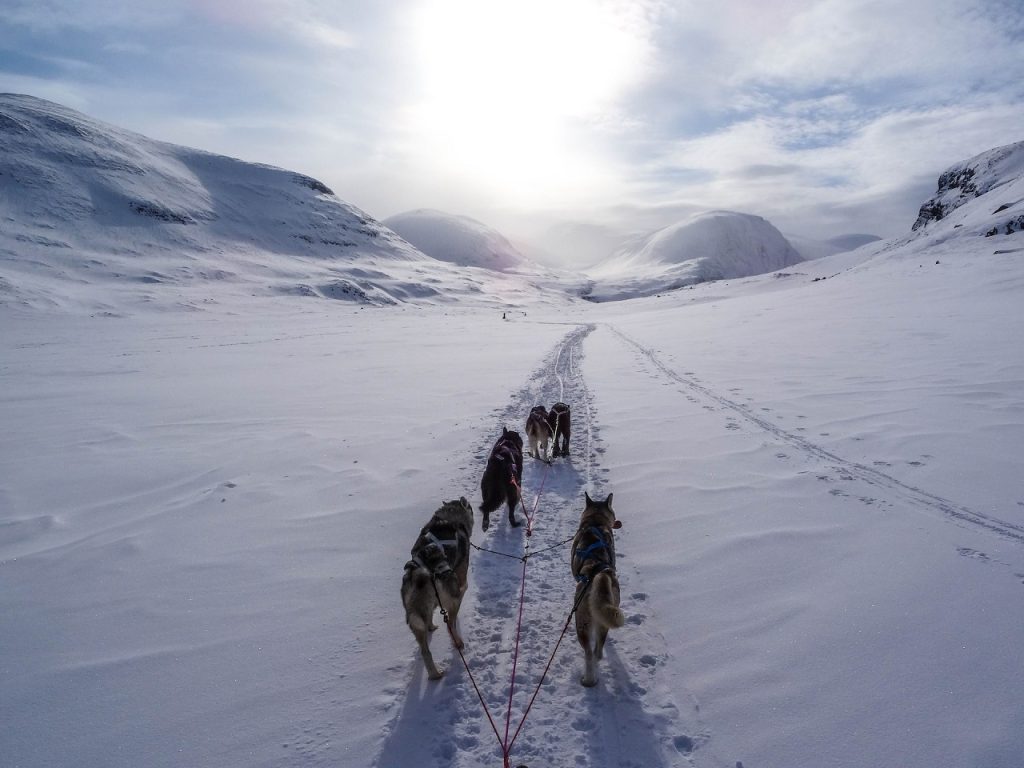

Tourism from China in on the rise
Norway has always been a popular tourist destination from closer European countries (Netherlands and Germany in particular), but the last decade has seen a sharp increase in tourism from Asian countries, particularly China .
Chinese tourists had 177,138 nights spent at accommodation in Norway in 2019, and has a “market share” of about 4 % of the Norwegian tourism sector.
I have seen that many popular tourist destinations have begun to include Mandarin signs on informational signs, so they are clearly taking up more space in the travel sector.
Statistically speaking, Chinese tourists are more interested in seeing the fjords (market share of 5 %), and not so much in seeing the northern lights or Northern Norway (2 % market share).
Interestingly Chinese tourists spend about 50 % more money per day compared to non-Chinese tourists (2,400 NOK instead of 1,680 NOK).
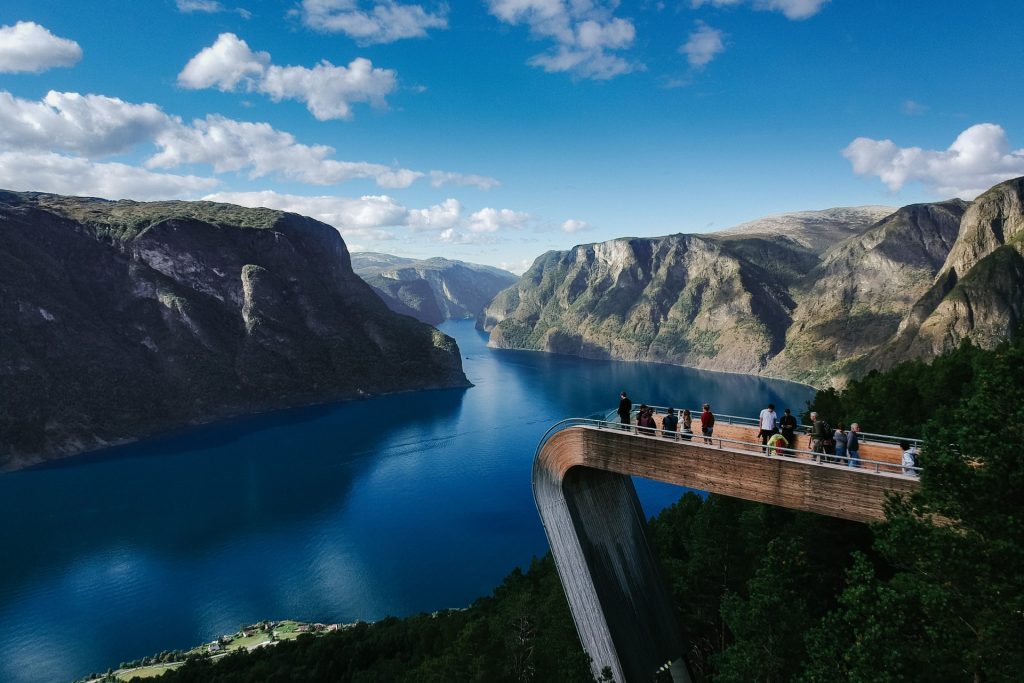
Sources and additional information
The below articles and reports are used as the base for this article. They are all in Norwegian, and you can easily click on the titles to read directly from the source:
- “ Stabilt år for norsk reiseliv i 2019 ” by SSB (Statistics Norway) .
- “ Nøkkeltall om norsk turisme 2021 “ by Innovasjon Norge .
- “ Tall of fakta fra og om reiselivet “ by Norsk Reiseliv (Norwegian Tourism Partners.
- “ Tall og fakta om reiselivsnæringen “ by NHO Reiseliv .
Bias and errors in the data
It’s important to be aware that all figures and numbers are affected by a certain amount of error and bias. Some important things to keep in mind is that it’s impossible to know how many of the international travelers who enter Norway do so as a tourists. Many of them are probably here to visit family or for work assignments.
There are also certain nationalities that can enter Norway without registering or telling any government official. Our neighbors from Sweden can freely drive to Norway as they please without needing any paperwork or documentation, so they will not be counted for the statistics if they just drive in without telling anyone. However, they will be counted if they enter by ferry or plane.
These are some of the biggest errors in the data, but I’m sure there are many smaller errors as well, so we can never trust the numbers 100 %.
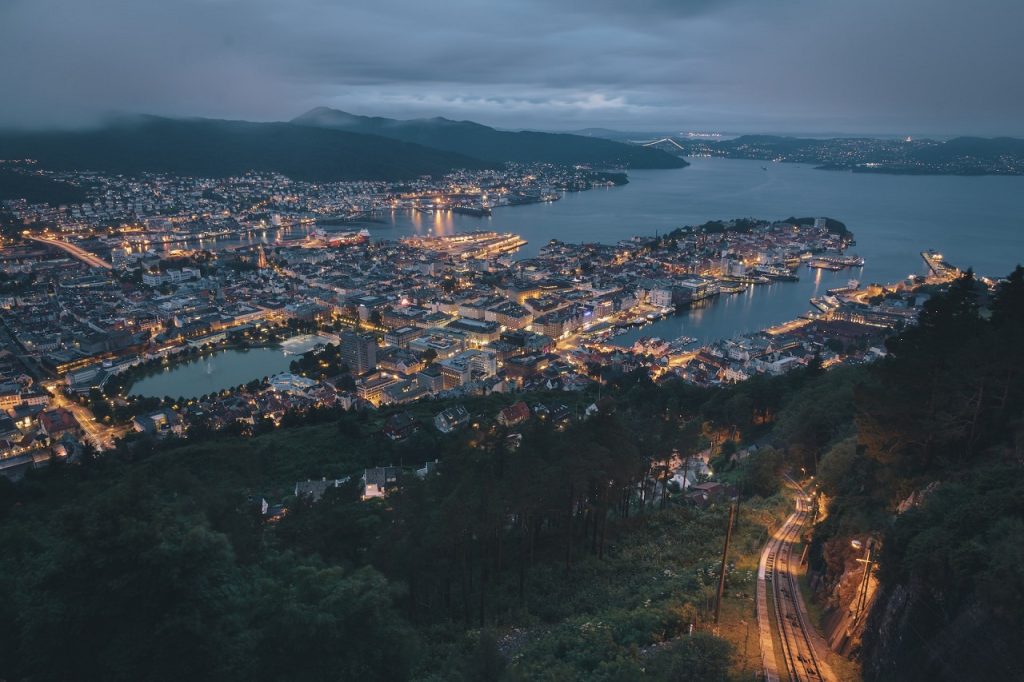
Leave a Comment Cancel reply
Save my name, email, and website in this browser for the next time I comment.

17 Things You Need to Know Before Visiting Norway

- 1. Norway is a Scandinavian Country
2. Polar Bears do not Walk in the Streets
3. the norwegian currency is nok (norwegian krone), 4. most norwegians speak english, 5. norway is a safe country to visit, 6. winter, spring, summer, fall, 7. always bring an extra layer of clothes, 8. wild camping is allowed in mostly all of norway, 9. national parks and most outdoor locations are free to use, 10. norway has the best salmon, 11. traveling in norway can be expensive if you only eat out.
- 12. Northern lights aren't visible everywhere
- 13. Norway is a Long Country
- 14. There aren't Many Dangers in the Wild
15. Norwegians eat a lot of Taco
16. the difference between southern norway and northern norway is huge.
- 17. The Midnight Sun Isn't a Different Sun
Are you dreaming of visiting Norway one day? Perhaps you've already booked a flight and have begun planning the trip. Regardless of where you are in the process, here are 17 things you should know before visiting Norway:
1. Norway is a Scandinavian Country
We Norwegians tend to believe that Norway is the center of the earth and everyone knows who we are. The truth is that Norway isn't as large as we want to believe and everyone doesn't even know that Norway even is a country.
Norway is a Scandinavian country with approximately 5.2 million people and has numerous times been named one of the best places to live and/or visit.
(For those who don't know: Scandinavia consists of Norway, Sweden and Denmark; 3 nordic countries located in Europe)
A common misconception is that Polar Bears walk the streets in Norway. This is, fortunately, not the case. In fact, there are no wild Polar Bears on mainland Norway.
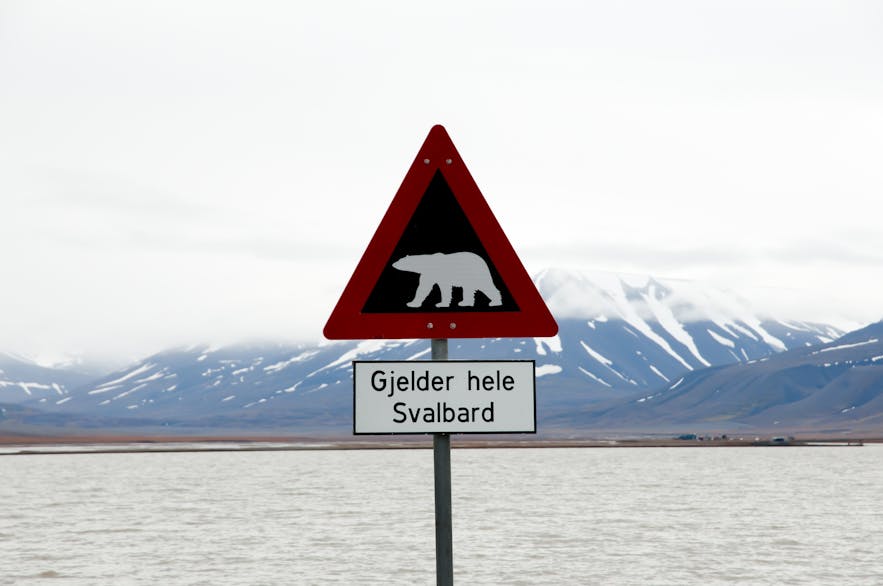
Norway is actually a really civilized country and you would be surprised to see how modern it is. We even have cars driving in the streets...!
Svalbard, however, is a Norwegian archipelago between mainland Norway and the North Pole where there are more Polar Bears than people. Still, it's rare that there are any incidents between the inhabitants and Polar Bears.
The currency we use in Norway is the Norwegian Krone. So, if you're traveling with only Euro you won't come far. The Norwegian Krone was recently weakened which means that if you're traveling to Norway in the near future it will be cheaper than what it was only one year ago.
It should be mentioned that Norway is using less and less cash. You can mostly anything with a credit card, even taxis and hot dogs! That means that it's not a crisis if you forgot to bring cash.
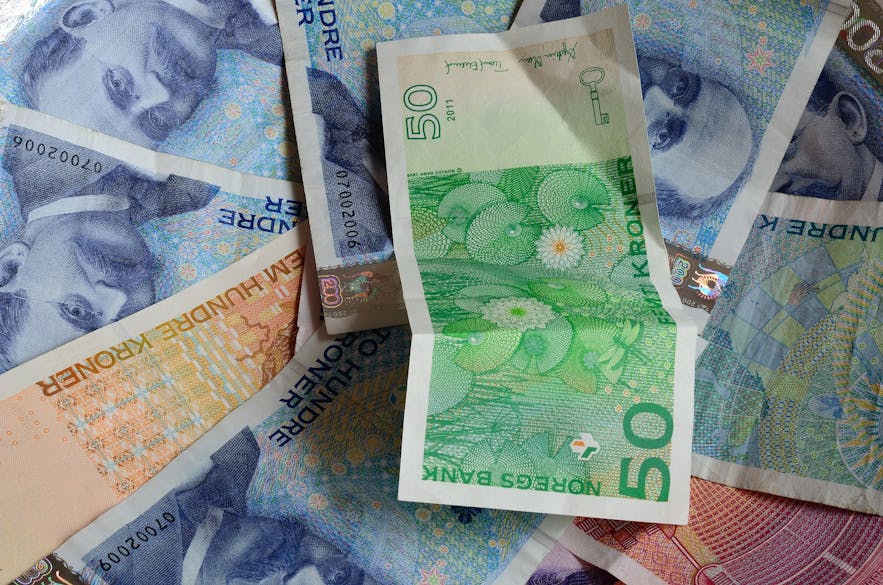
Don't know Norwegian? No problem! The majority of Norwegians speaks English. Even though some are a bit shy to have a full conversation, they are able to understand most and to help you with any questions you might have.
So, don't be afraid of saying hi to a stranger!
Norway is known to be one of the safest countries in the world. Crime rates are extremely low even in major cities such as Oslo , Bergen , Trondheim , and Stavanger .
As with any other urban areas, you should take certain precautions but there's not much to be afraid of. Even walking alone during the night is relatively safe and the chances are small that you'll become the victim of a crime.
Most crimes in Norway are related to home and office burglaries. There are some groups of pickpocketers traveling around the most touristic areas during summer so keep an extra eye on your wallet when you're in a crowd (still, the possibilities of anything happening is low).
There are 4 seasons in Norway: winter, spring, summer, and fall. Be sure to take this into consideration when you're planning to visit Norway . Some attractions are only open during a specific season and certain hikes are unreachable during winter. If your main purpose is to visit one specific location figure out what season is optimal for that.
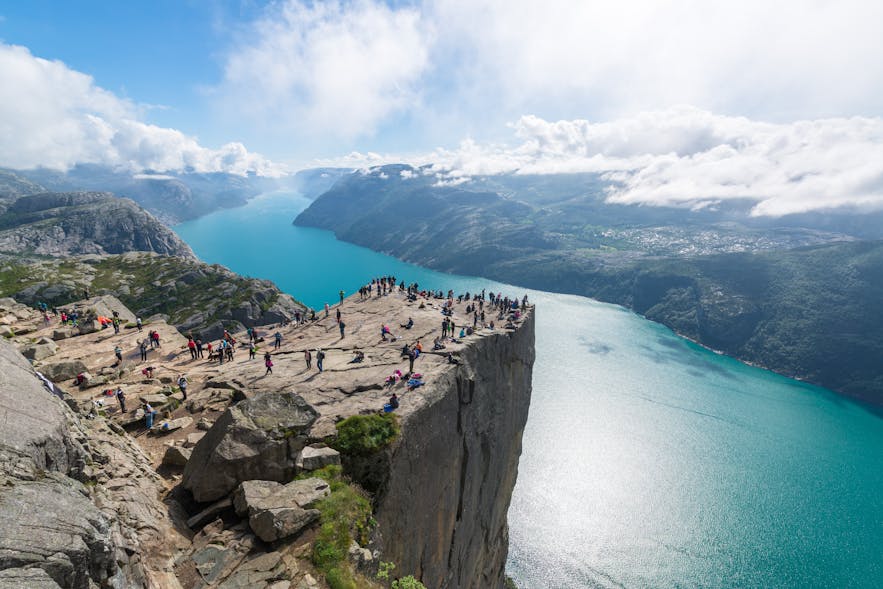
Another thing to keep in mind is that the weather changes a lot between seasons. Make sure that you always bring enough clothes when traveling to Norway as it does get cold! Keeping an eye on the weather forecast is always a good idea.
The weather, as mentioned above, changes a lot between seasons in Norway so you always want to bring enough clothes. Most importantly, if you're planning to go on some hikes during your visit, you need to bring an extra layer of clothes. Even during summer, it's wise to bring a rain jacket and a fleece in your backpack in case the weather changes or the temperatures drop when you reach a higher altitude.
Due to " Allemannsretten " (every man or woman's right of public access), you can pitch a tent wherever you want in Norway (unless anything else is stated at a specific area). The outdoors is very important for us Norwegians and we do our best to maintain the right of using the outdoors freely. So, make sure that you leave no traces behind and don't do any damage to nature.
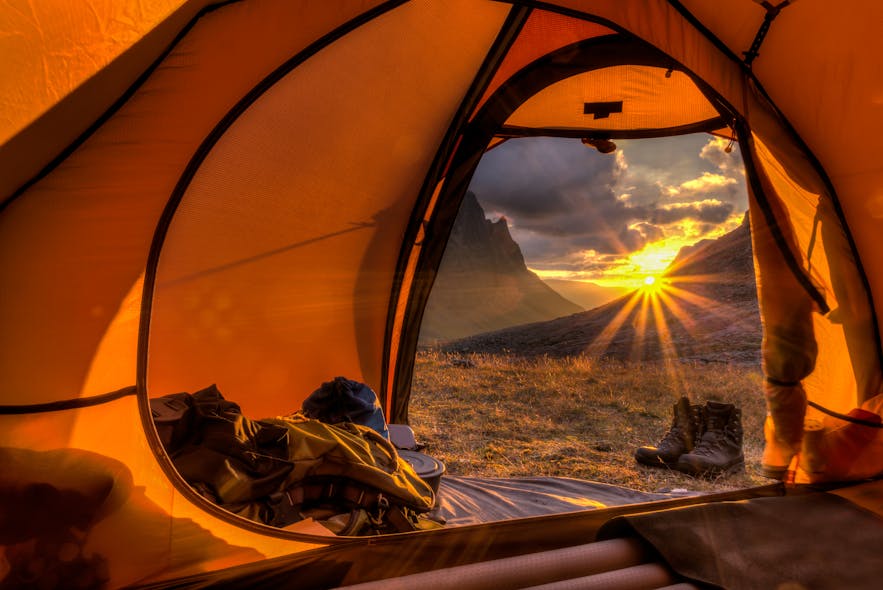
There are also several campsites all over Norway that are cheap to stay at. At these sites, you often have the possibility to take a warm shower, clean your clothes and charge any batteries.
Also, due to "Allemannsretten", all public lands are free to access. This means that you don't have to pay an entrance fee for a national park and you're free to go mostly wherever you want. All we ask is that you treat nature with respect and do your best not to leave any traces behind.
It's true, Norway has the best salmon. In fact, it was Norwegians who introduced the Japanese to Salmon Sushi in the 1980's. That's how good our salmon is.
While salmon isn't cheap, make sure that you have at least one proper salmon meal in Norway even if you're traveling on a budget.

It's no secret that Norway is an expensive country to visit. Even though it's less expensive now that the Norwegian Krone is weak, it's not cheap. One way to avoid spending too much money during your travels in Norway is to eat less at restaurants. Purchasing your own food at a supermarket is much cheaper than going out every day. Unlike many other countries, Norway doesn't have a culture of going out to eat.
If you are traveling on a budget make sure that you read through our Norway on a Budget Guide .
12. Northern lights aren't visible everywhere
Are you dreaming of seeing the northern lights? Well, Norway is the right place to do it!
There's something magical about watching the sky turn into a green and purple formation dancing all over. I still remember the first time I saw it for myself, it was a moment that changed my life...
Many tourists come to Norway with the intent to see the northern lights . However, the northern lights (or Aurora Borealis) isn't visible all over Norway.
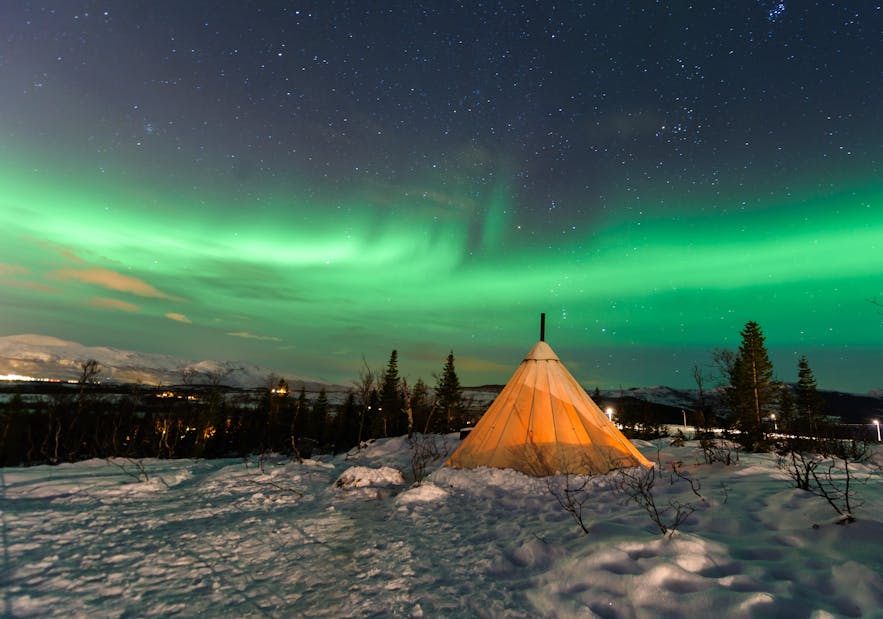
Since Norway is a long country you're normally only able to see the lady in green in the northern parts of Norway. The further south you go, the fewer lights you will see. Places such as Lofoten, Bodø and Tromsø are popular areas to watch the northern lights .
You should also remember that the northern lights won't be visible during the summer as it is too bright during that season. Typically, you've got the best chance of seeing some activity between October and April.
13. Norway is a Long Country
Another large misconception about Norway is that it's a small country which is easy to travel around. This isn't the case. Even though only 5 million people live here, it’s a large country by area (148 718 square miles) that stretches from 57° to 81° North. This means that you're not able to spend a couple of days in Norway and see both the west coast, capital and northern parts. In fact, driving from Kristiansand in southern Norway to Nordkapp in Northern Norway takes about 38 hours non-stop.
Therefore, you should plan your trip carefully and look at the distances between the places you want to go. If you want to see places in all regions I strongly suggest you spend some days extra or plan more than one trip.
- Press here for self-drive itineraries in Norway
- Press here for self-drive tours in Norway
14. There aren't Many Dangers in the Wild
Besides the Polar Bears on Svalbard, there are no dangerous animals waiting to attack you in the Norwegian wild. Either you're in the woods, on a mountain or on a glacier, you have nothing to fear.
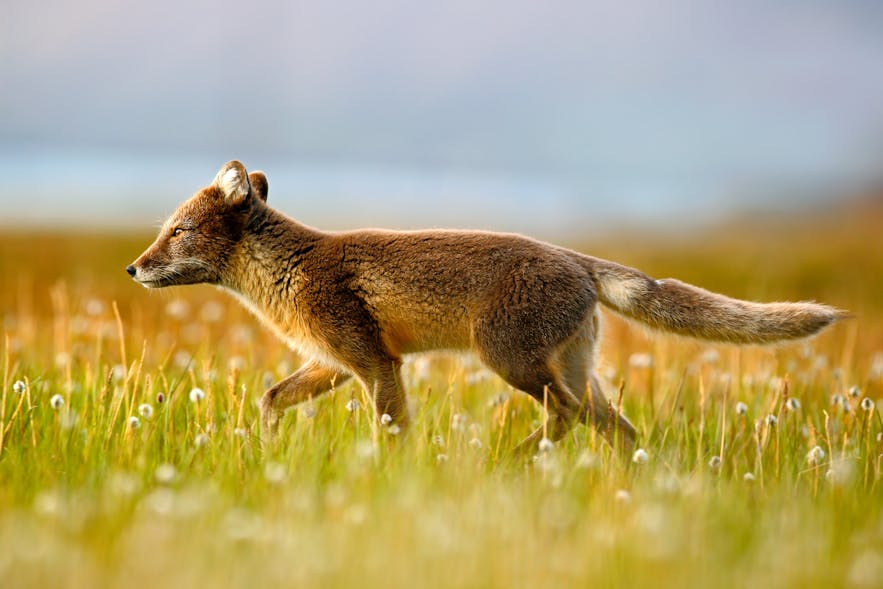
There are animals that you want to avoid but they will typically run away before you even see them. You can read more about wildlife and animals in Norway here .
If you visit a Norwegian family on a Friday evening the possibility is high that they are having Tacos for dinner. As a joke, it's said that Tex-Mex is Norway's national food. Yes, it really is that popular - even my grandma makes Tacos on Fridays!
(Ok, you might not have needed to know this but it's a fun fact that might work as an awkward icebreaker!)
Since Norway is such a long country it goes without saying that the differences are quite significant. In the southern Norway, you have beautiful coasts and warm (not tropical!) weather, the East has large areas of woods and the capital, the West has the fjords and mountains while the north has the arctic landscapes.
You might also notice that the dialects spoken throughout Norway are quite different and if you're just learning to speak some Norwegian it might be a bit confusing.
17. The Midnight Sun Isn't a Different Sun
During winter, northern Norway has polar nights; a period where the sun never rises above the horizon and you have 24 hours of dark. During summer, however, it's the exact opposite; the sun never sets.
You might have heard of the Midnight Sun before. Unlike what a few tend to believe, the midnight sun is actually not a different sun...it's just the same sun as during the rest of the year but it doesn't go down; meaning 24 hours of daylight.
- Press here for things to do in Oslo
- Press here for things to do in Lofoten
- Press here for things to do in Tromsø
Popular articles
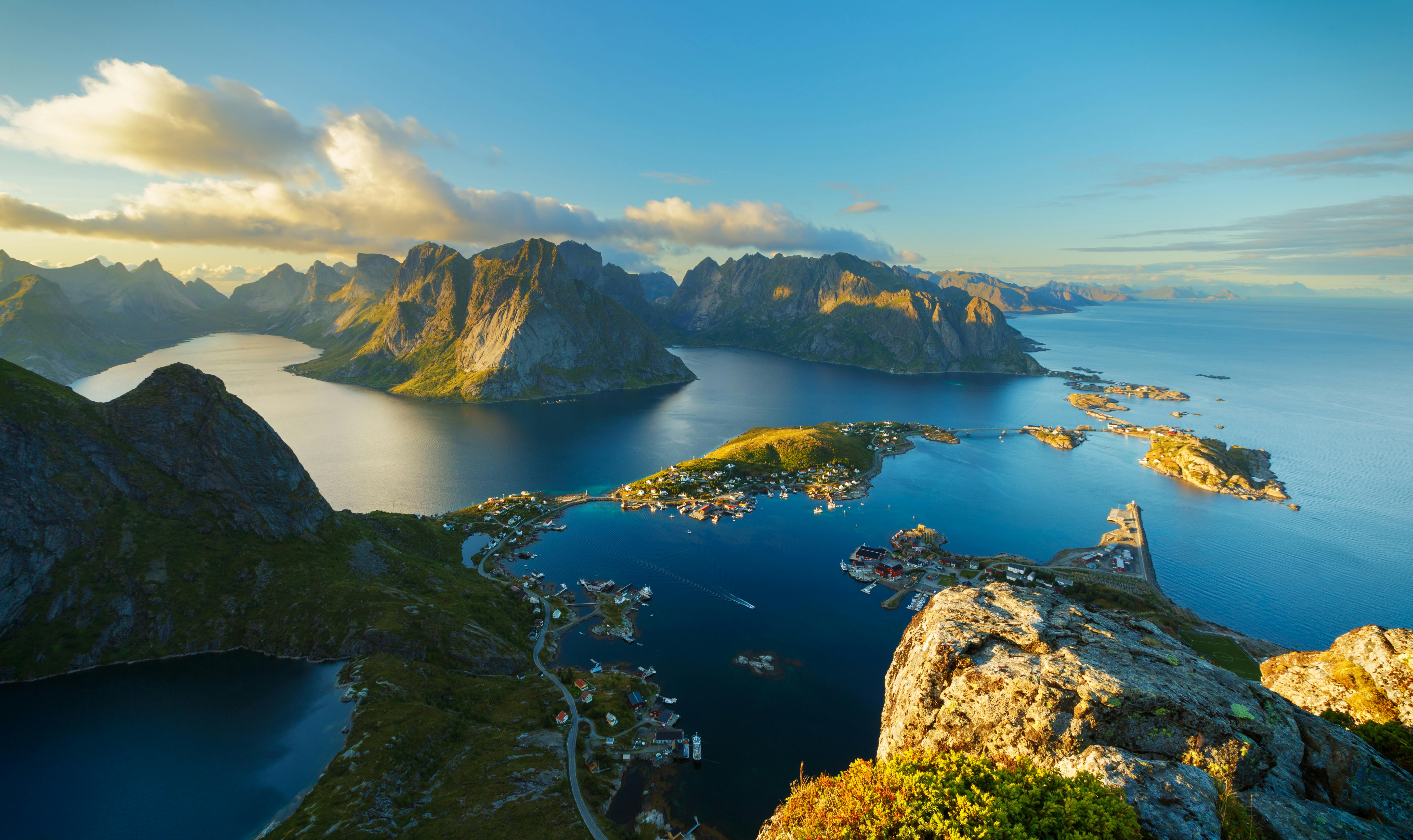
7 Amazing Hikes in Norway
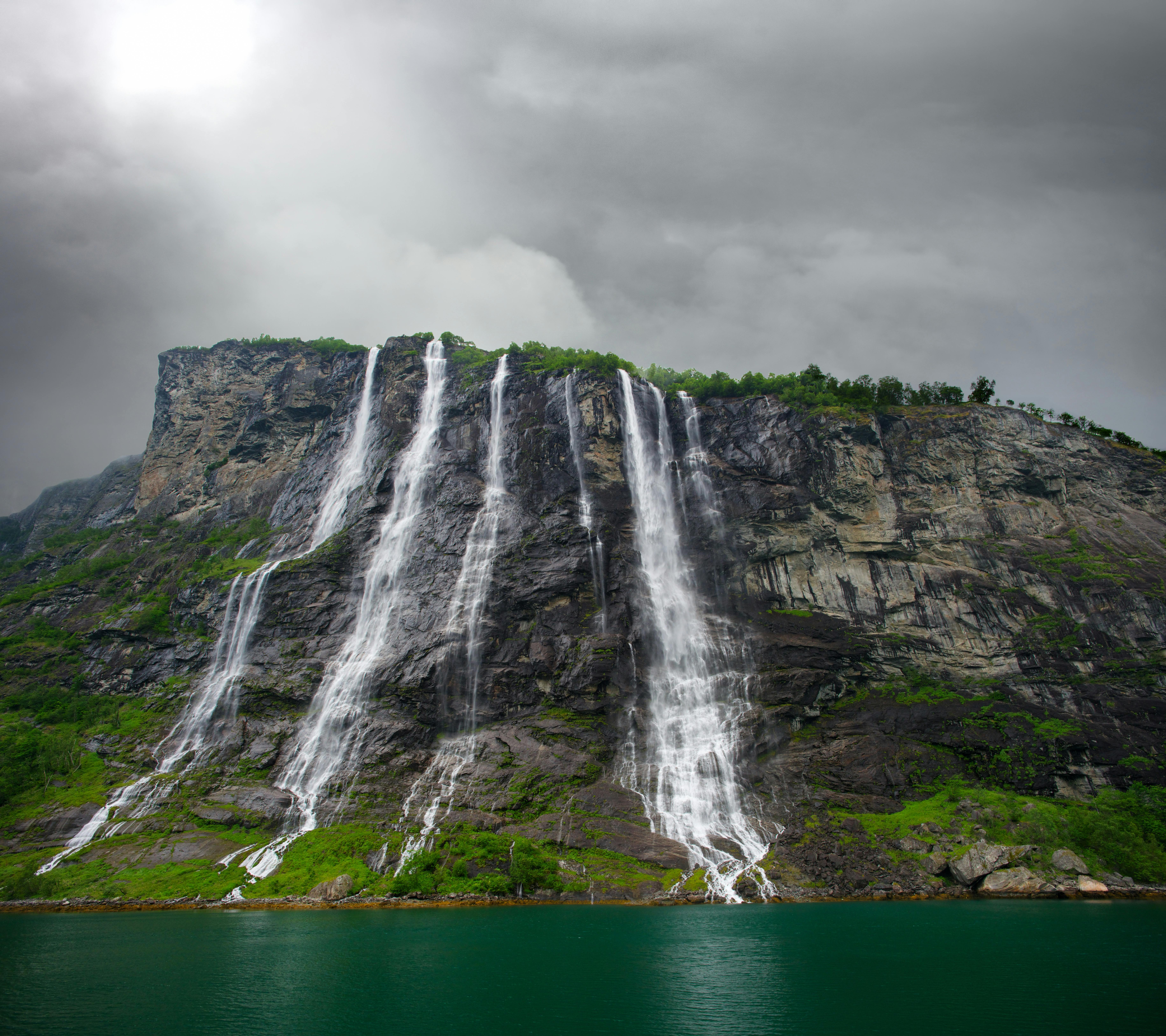
Top 10 Waterfalls in Norway
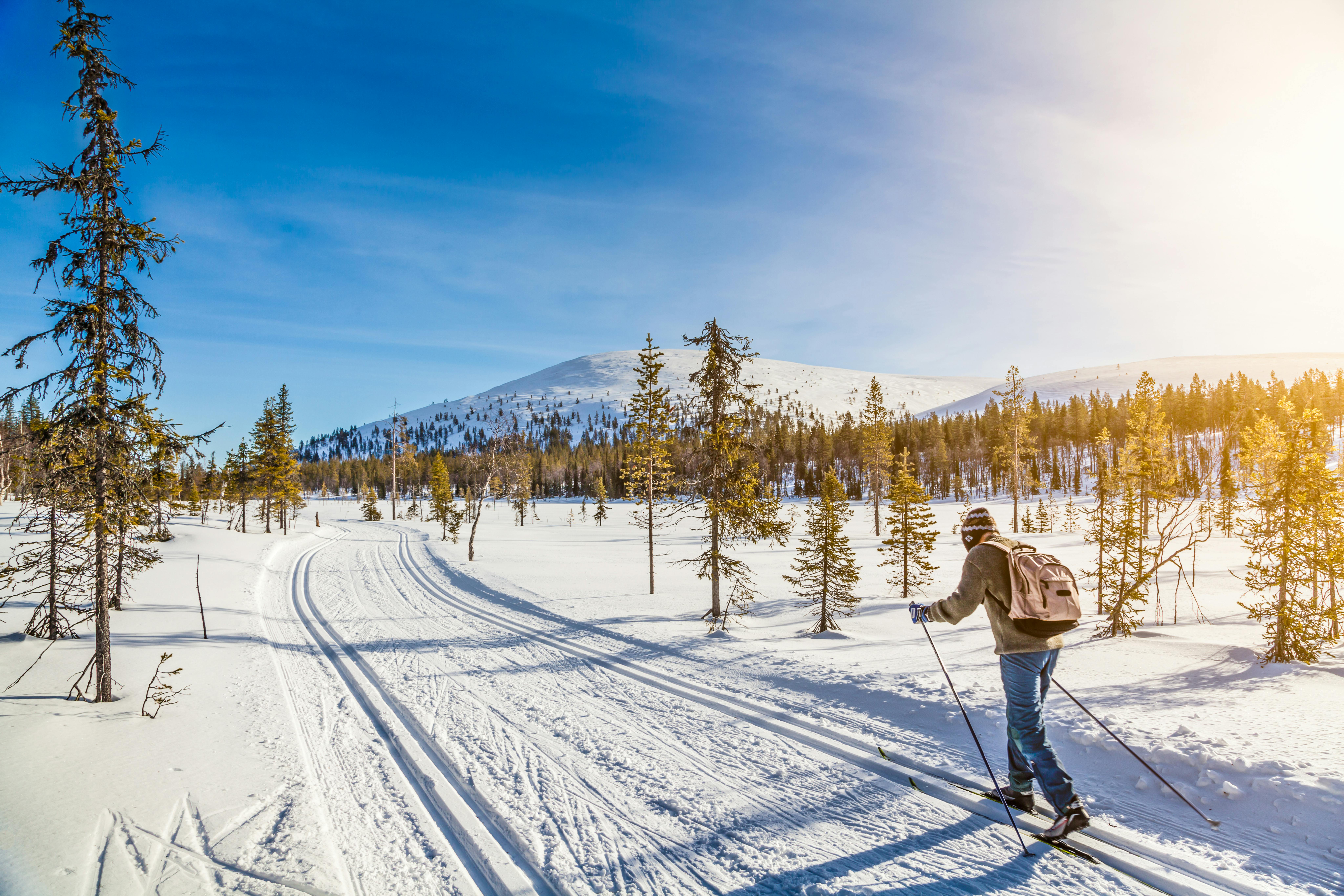
Top 10 Things To Do In Norway
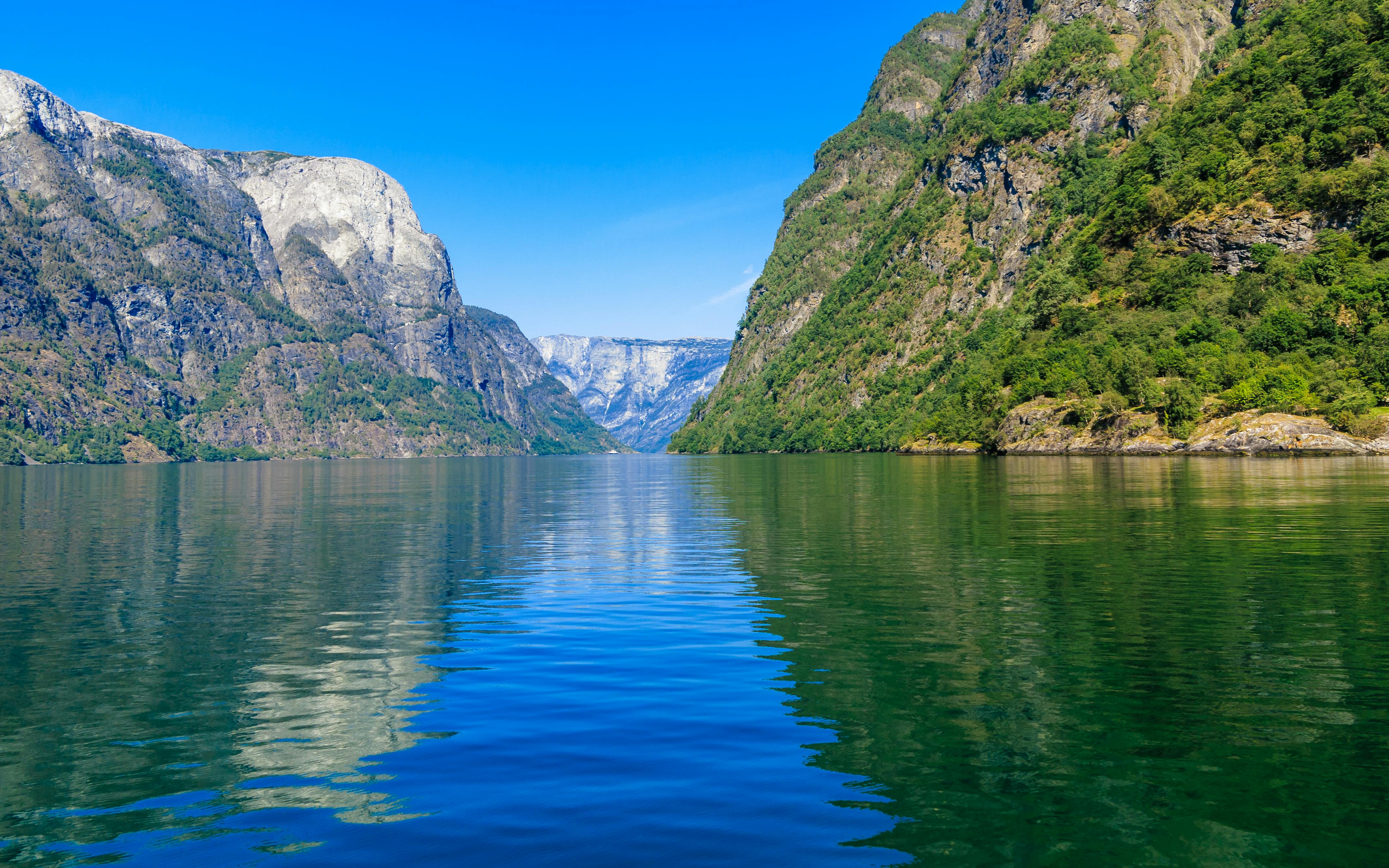
The Ultimate Countdown of Norway's Fjords
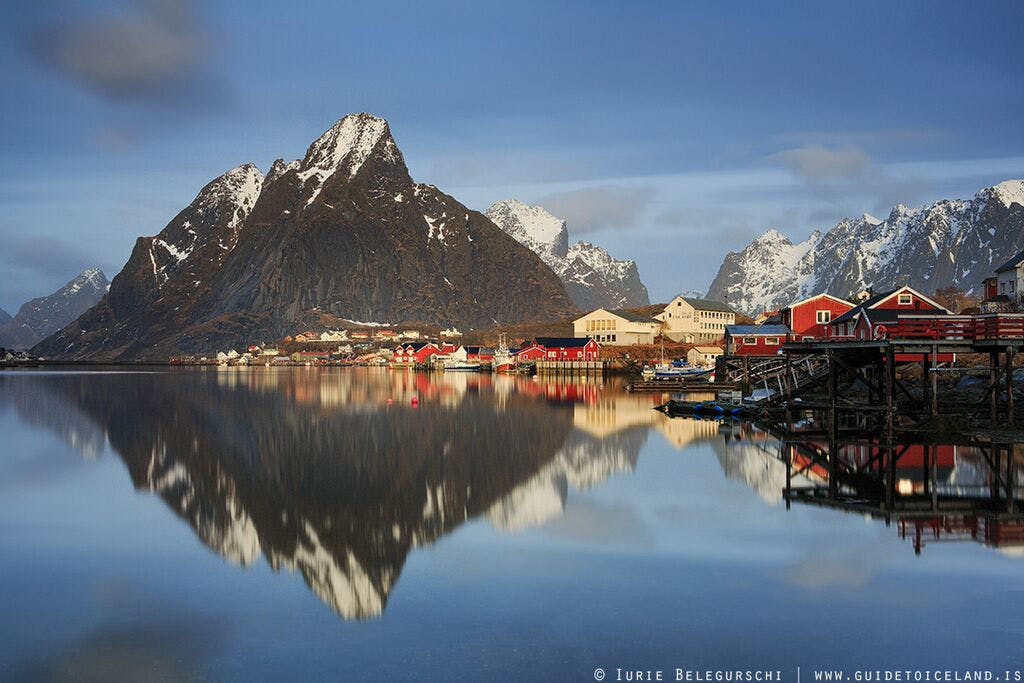
8 Things You Didn't Know About Norway
Other interesting articles.
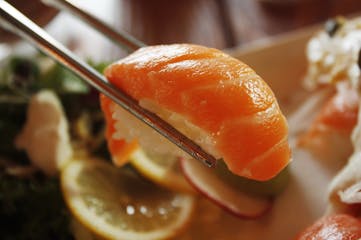
5 Norwegian Inventions You Should Know About
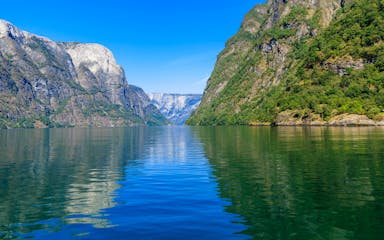
15 Photos That Will Make You Want to Visit Northern Norway
Top things to do in norway.
Book your complete trip with the best companies only
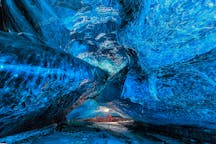
Adventure Tours
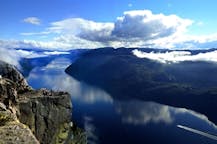
Fjord Tours
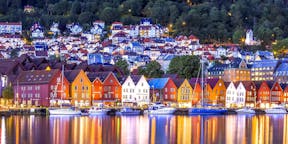
Vacation Packages
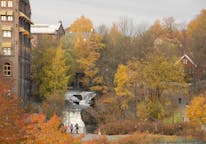
Biking Tours
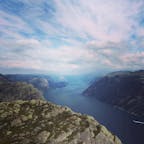
Sightseeing Tours
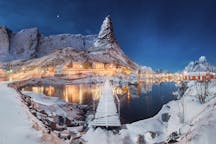
Lofoten Tours
- Photo Tours
- Private Charters
- Destinations
- Dates and Rates
- Get In Touch

- South Georgia
- Guest Stories
- In The Media
- Photography Tips
- Travel Tips
- Expedition Journals
25 Best Places to Visit in Norway – An Overview With Top Tips

Passionate for far-away places and habañero hot sauce
From remote, frozen shores and soaring mountain peaks, to Scandinavian architecture, esoteric music festivals, and nautical history – planning a Norway trip can be a big task. But Norweigans love nature, and they’re never far away from it. So even if you’re only there for a short city break, there’s plenty of adventure to be found. We’ve rounded up 25 of the best places to visit in Norway to help you find yours.
1. Svalbard
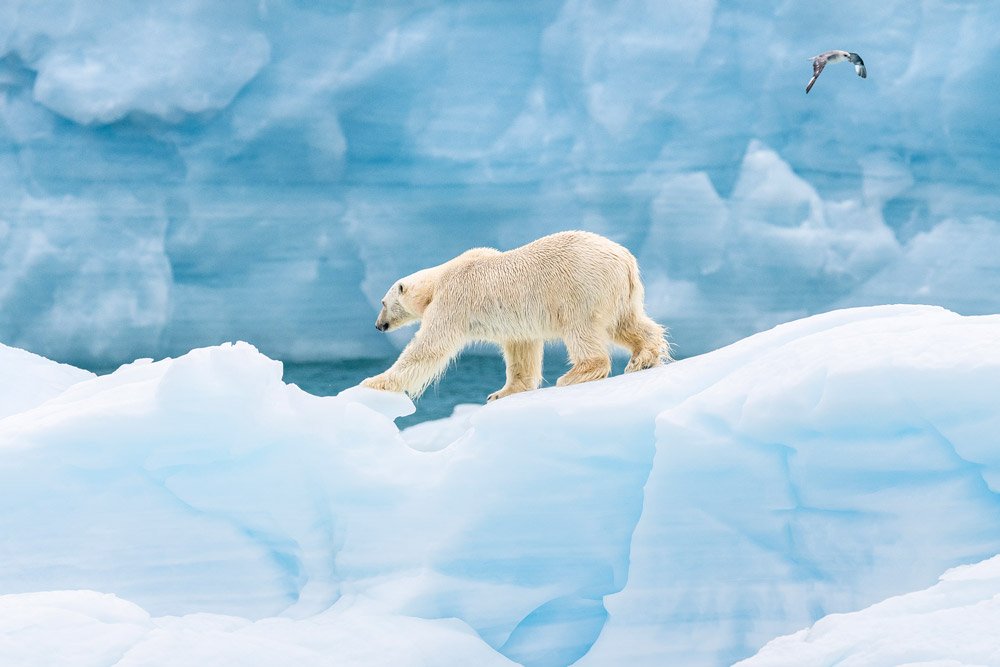
Situated in the Arctic circle, Svalbard is a haven for rare wildlife and has miles and miles of pristine wilderness to marvel at. Despite its remote feel, it’s relatively accessible as the largest settlement of Longyearbyen is home to the most northerly commercial airport in the world.
The landscape changes from huge, domineering glaciers and mountains to snow-covered plains and sheltered coastal coves. Wildlife you can expect to see there includes polar bears, walruses, beluga whales and an array of birdlife – including puffins and Arctic skuas. If you are interested in visiting Svalbard please don’t forget to take a look at Secret Atlas’s Expedition Micro Cruises . With only 12 Guests onboard our ships, we provide an intimate, authentic and sustainable way to explore this remote and untamed region.
Join Our newsletter
Join our mailing list and get a free copy of our Explorers Club Magazine delivered to your inbox.

One of the largest northern cities on mainland Norway, Tromso is situated within the Arctic Circle and the Northern Lights oval – making it a prime location to witness this majestic natural phenomenon. The Aurora Borealis as they’re also known cast incredible colourful patterns over the night sky and are particularly prominent in the winter months (September-April).
Tromso itself has some great museums, restaurants and events.
Find out more
3. Lofoten
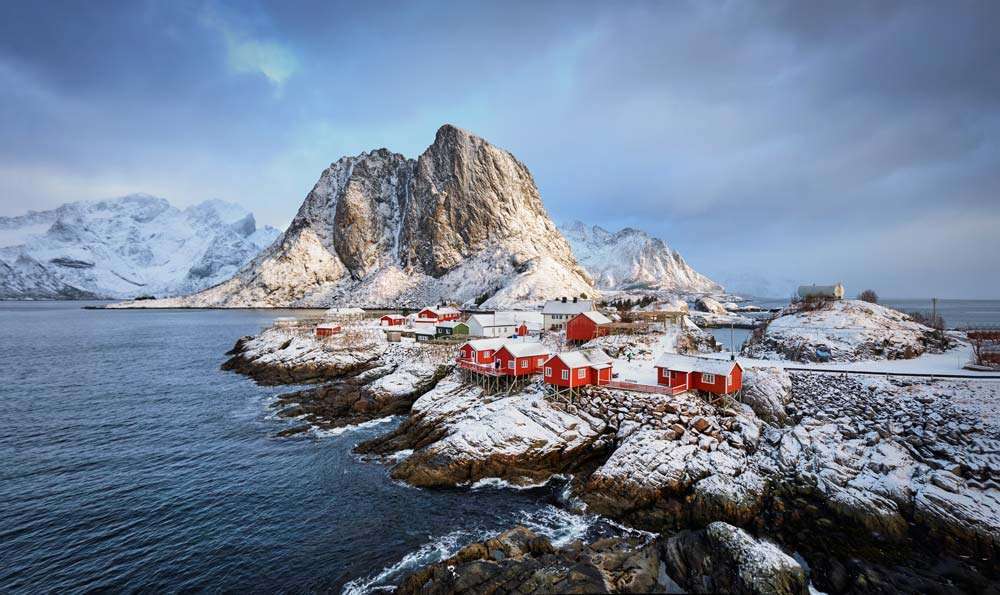
A true gem in the Norwegian crown, Lofoten is home to a group of islands on the north-west coast of Norway as well as impressive mountains, deep fjords and no shortage of wildlife – including some big colonies for migrating birds. Situated in the Arctic Circle, there’s a good chance of seeing the Northern Lights from here in winter. But it’s not as cold as you might imagine thanks to the warming Gulf Stream.
It’s worth taking a bit of time to properly explore the Lofotens and the surrounding area like Trolljfjord. The narrow fjord It’s actually situated between Lofoten and the Vesterålen archipelago and is surrounded by rugged mountain peaks that are particularly stunning in the winter. If you look up towards the spiky peaks, you might even catch sight of the white-tailed sea eagle flying overhead.
Lofoten is also a great spot for fishing, including the picturesque village Reine lined where fisherman’s huts line the shore. But visitors come for a combination of beautiful scenery and outdoor activities. It has some of the Lofoten Islands best hiking trails, including Reinebringen, and it’s also a great destination for cycling, kayaking, and skiing. The archipelago is also home Nusfjord, another historic fishing village with colourful buildings and spectacular mountain views.
4 . Bergen + Westfjords
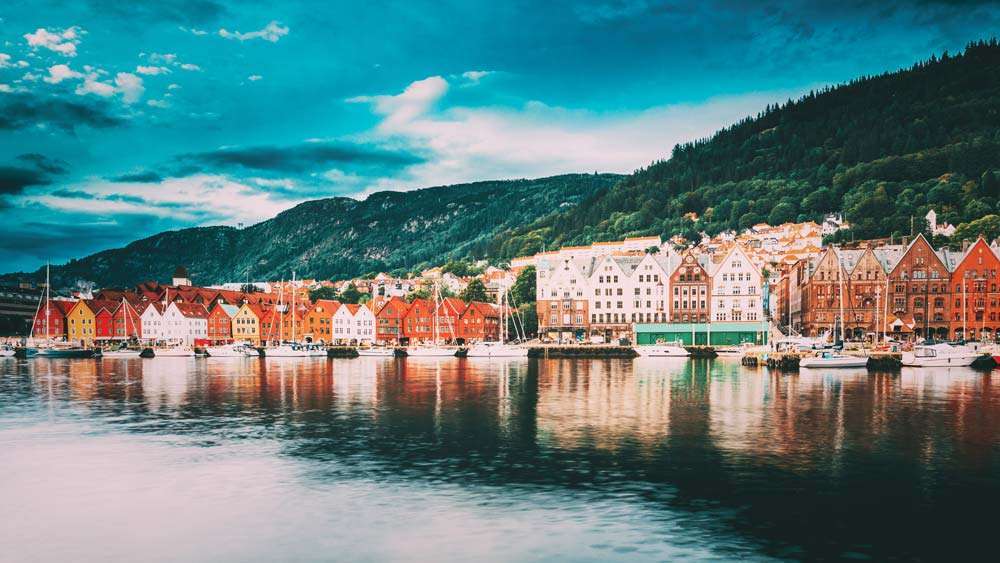
Norway is renowned for its fjords. The Western Fjords are a UNESCO World Heritage site and as such is a protected area, but it welcomes hundreds of thousands of visitors each year. Most start their journey in the city of Bergen – the gateway to the fjords.
A fjord is a sea-drowned valley carved out by glaciers moving and leading to sheer cliffs, thunderous waterfalls and calm turquoise bodies of water to sail through.
5. Geirangerfjord
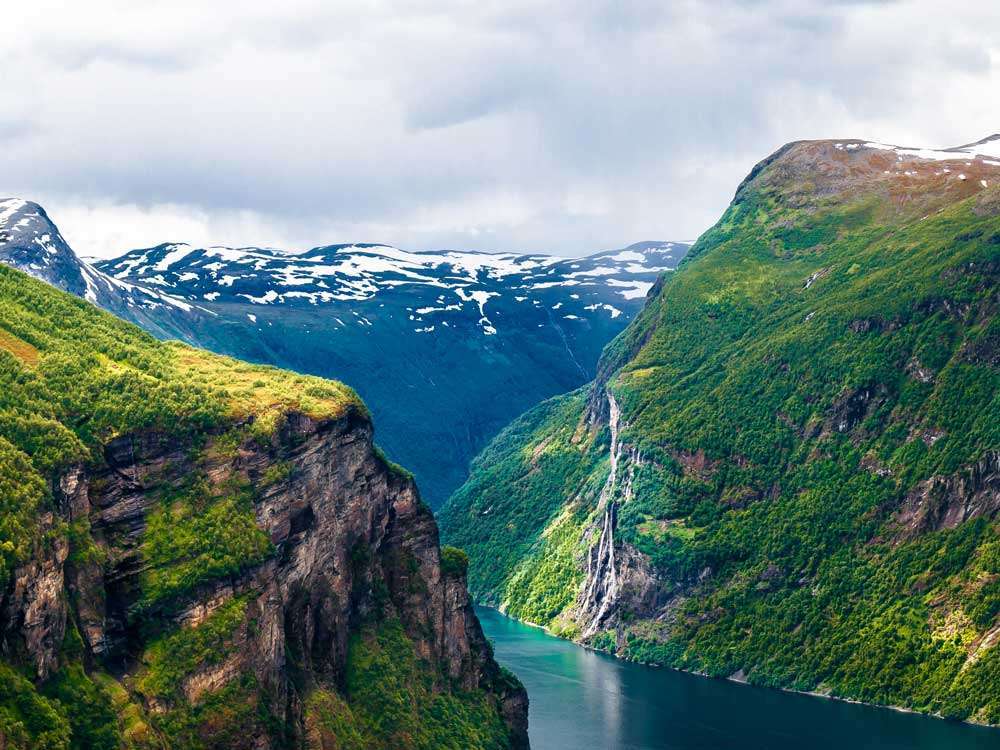
Norway’s most popular and loved fjord, Geirangerfjord is 260 metres deep with the surrounding mountains towering overhead at up to 1700 metres tall.
This contrast makes for some epic waterfalls, including the Seven Sisters Falls. There are abandoned farms dotted around the lower edges and sustainable settlements, including the quaint village of Geiranger with just 250 inhabitants.
6. Pulpit Rock
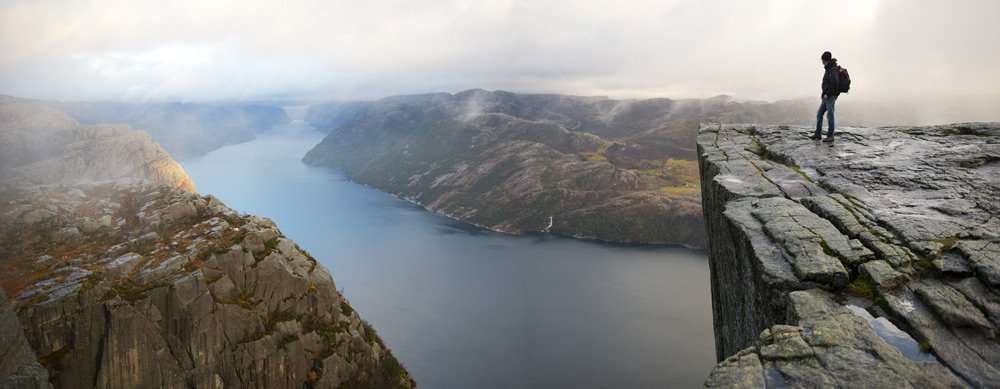
Situated within the Lysefjord, this is one of the most photographed spots in Norway, but not everyone has the stomach for it; a flat-topped viewing platform (25 metres by 25 metres) leading out over a sheer 600+ metre drop into the fjord below, a natural formation – rather than man-made intervention.
Pulpit Rock, known locally as Preikestolen, makes for a rewarding 10km hike. You’ll need to allow a good 4-5 hours and pack plenty of snacks!
Find out more :
7. The Atlantic Road

Without a doubt, one of the most picturesque drives in the world. A five-mile-long stretch that winds and weaves its way over the Atlantic Ocean (hence the name!) connecting the island of Averøy with the mainland at Eide.
The Atlantic Road, or Atlanterhavsvegen as it’s also known, was initially going to be a railway line but was completed as a road and opened in 1989.
It’s a little out of the way of the usual tourist spots but is well worth a detour for the spectacular views alone.
8. Bear Island

For true Arctic adventure and escapism, it’s hard to bear Bear island. Getting there is an adventure in itself. Sitting in the Barents Sea, it’s the southernmost island in the Svalbard archipelago which doesn’t have the fjords and bays of other islands so landing is more challenging.
Bear Island is remote and rarely explored (although Secret Atlas runs a trip there!), and people make the trip for the island’s untamed scenery with sheer bird cliffs. The island is home to huge numbers of birds like black-legged kittiwakes, puffins, and little auks.
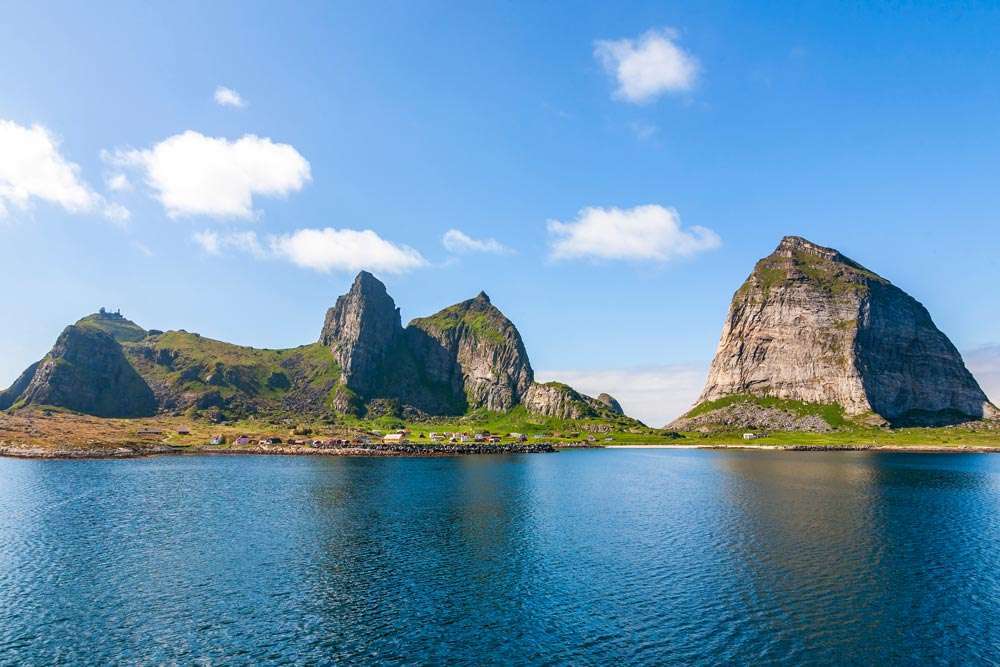
Sitting at the edge of the Arctic Circle, and about 33 nautical miles from the mainland lies Traena. The beautiful municipality of islands, islets and reefs dates back 9000 year (to the Stone Age) and it’s one of the first settlements in Norway. Only four of the islands are inhabited, and you can visit for hiking and historical remnants, with Husøy as the main hub for accommodation.
On Sanna also known as “the mountain island”, you can visit a mountain cave that has been used for ancient rituals for over a thousand years. For a more contemporary sonic experience, visit in summer to experience Trænafestivalen – one of the more remote and unique music festivals in Europe.
10. Nærøyfjord

Norway is full of fjords, but one of the most beautiful and dramatic is Nærøyfjord. It’s actually a branch of The Sognefjord – Norway’s longest fjord and is on UNESCO’s World Heritage list. It’s one of the narrowest fjords in Europe and is surrounded by soaring mountains.
Taking a trip down the Nærøyfjord by boat or kayak, you’ll get up close to stunning nature including waterfalls and look up to see tiny mountain farms above you. It’s also a great place for wildlife watching where you might get to see eagles, dolphins, seals and otters.
11. Sognefjord
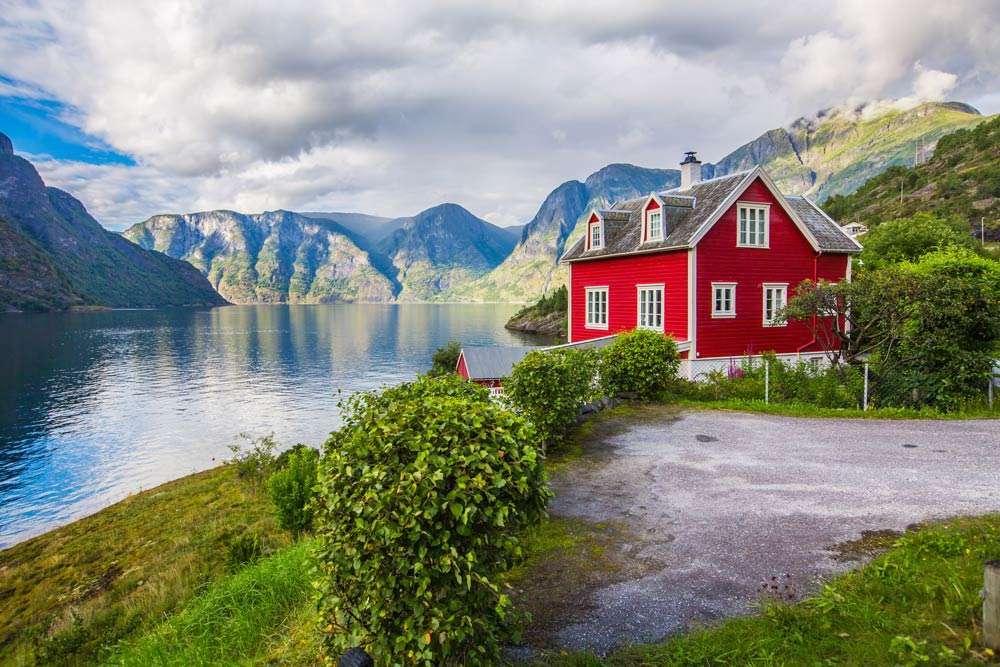
Known as “The King of the fjords” – Sognefjord on the west coast, is the longest, and deepest fjord in Norway. It was formed in the last Ice Age which created the high mountain peaks and deep valleys that make up its landscape.
Visitors come to get up close to nature, to explore the different fjords that branch off Sognefjord as well as verdant valleys, mountain ranges and glaciers. For some of the best views, hop on the Flåm Railway – for a twisty ride through the mountains and sweeping views over the peaks, valleys and waterfalls. Grab a window seat for one of the most memorable train journeys in the world.
12. Oslo (with Fram Museum)

Although it’s Norway’s natural wonder that captivates travellers, it’s capital city Oslo has a good mix of urban life and nature to satisfy the need to explore. It was named European Green City 2019 thanks to its dedication to conservation and reducing pollution.
Oslo is a pretty compact city, so you can easily stroll around or hop on a bike to its blend of new and old Scandinavian architecture. Many of its central areas are traffic-free these days, so walking and cycling is a more relaxed experience than in other European cities.
Stop off at Fram museum to take a deep-dive into the city’s rich history including The Fram – the first ship built in Norway for polar research and used on an Arctic expedition by Fridtjof Nansen. Oslo is nestled between the Oslofjord inlet and the lush greenery of the Oslomarka forest – so you can take a short metro ride for a big dose of nature, which according to Norwegians is the best medicine. We’re certainly not going to disagree.
13. Ålesund
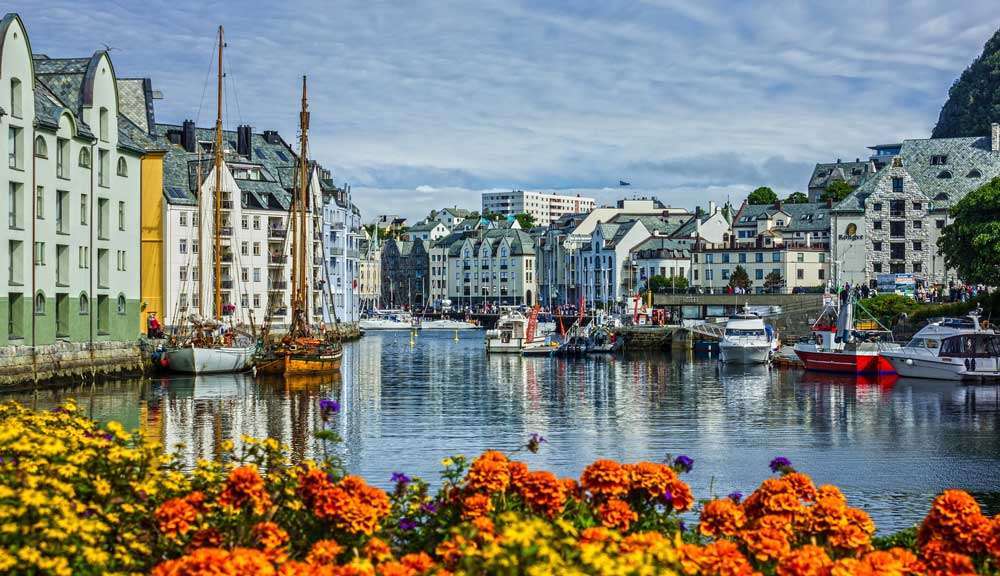
The small west coast city is the gateway to exploring Norway’s vast fjords and mountain landscapes. Take a wander through Ålesund’s downtown Art Nouveau district to explore colourful buildings, then head over to the Fjellstua viewpoint to take in the surrounding scenery.
If it’s raining, you can take shelter by crate-digging at one of the city’s record shops like Serie Antivariet and Jukebox, and warm up with a bowl of local fish soup.
As well as its proximity to famous fjords like the spectacular Geirangerfjord, people come to Ålesund for outdoor activities like hiking and alpine skiing, cross country skiing, and a bit of fishing too. Take a short trip out of the city to visit Alnes Lighthouse or do a challenging mountain hike up Slogen.
14. Trondheim
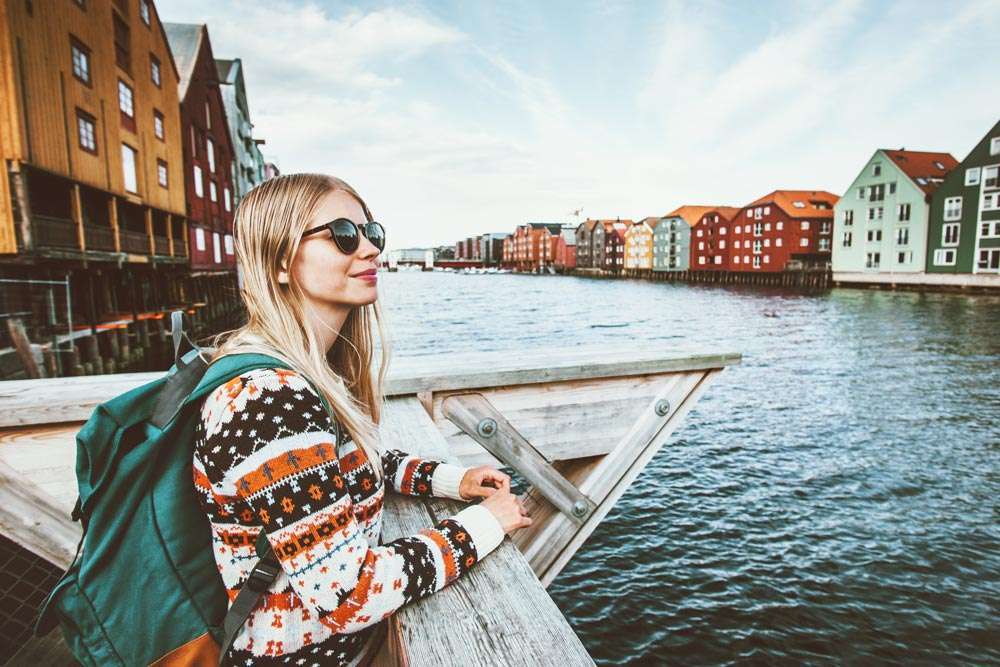
Norway’s third-largest city is another great place to explore by bike. And like other Norweigan cities, nature is on its doorstep. Start with a cycle around Bakklandet, the city’s old quarter which has paved sections for bikes so it’s easier to navigate the cobbled streets and enjoy the colourful wooden buildings – and even a lift to take you up to a view point.
Then back down again to check out the local food scene, including Mat Fra Hagen vegan restaturant.
Trondheim is also home to international music conference Trondheim Calling, which is like a Nordic South by SouthWest which is on in the winter. To get away from the city, visit nearby Monk’s island for some solitude and reflection, or explore the islets at Trondheimsfjord.
15. Jotunheimen National Park

Exploring the great outdoors is part of any trip to Norway, but there’s a whole lot of nature to explore in the “home of the giants” in the east. Jotunheimen is the most famous of Norway’s national parks, and home to over 250 mountains, including the tallest Galdhøpiggen – the highest in northern Europe.
It’s a haven for hikers, with tens of thousands of people coming to Besseggen Ridge each year, including famous Norweigan playwright Henrik Ibsen, who wrote about it in his play Peer Gynt. There are many more hiking trails to take on too, as well as plenty of places to camp either wild camping, or rest up in a cosy wooden hut or cabin.
But it’s not just a great place to hike, people visit Jotunheimen to see glaciers, beautiful lakes, cycling routes, rafting, and horse riding.
Find out more
16. Stavanger

The port city on Norway’s south west coast is surrounded by mountains (including Pulpit Rock) and beaches. Take a wander around the historic Gamle Stavanger (Old Stavanger), to explore lots of little museums where you can learn about things like viking history, as well 18th and 19th century wooden houses.
The port is beautiful, and comes into its own in the summer months. There is lots of street art to appreciate too, and it even has its own dedicated street art festival called Nuart which takes place in later summer. Stavanger is also a gateway to more mountain hikes and natural wonders like Sverd i fjell and Kjeragbolten.
17. Trolltunga
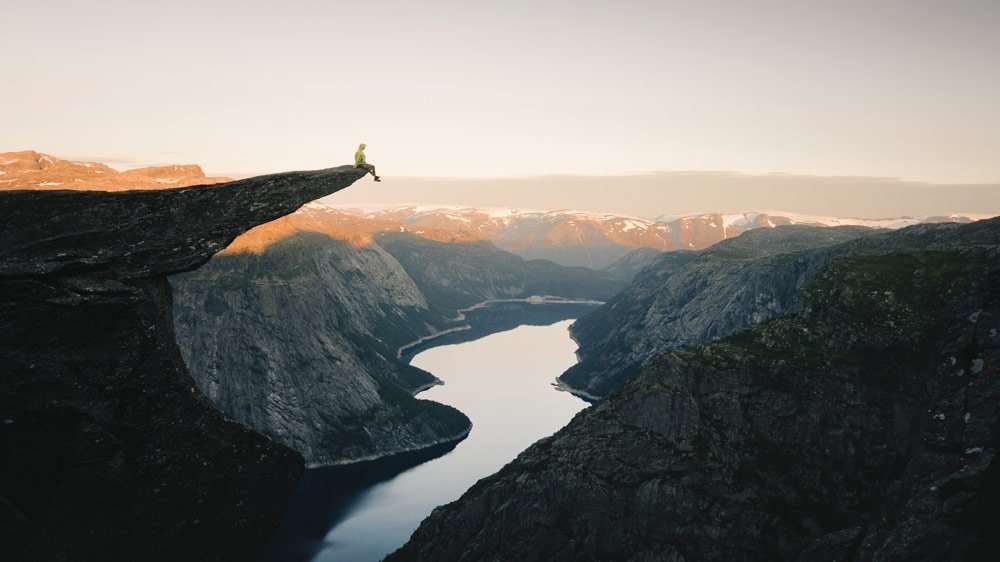
Translating as Troll Tongue, Trolltunga is a spectacular rock formation in the Vestland region. It’s also a pretty strenuous hike, so guided group hikes are recommended (although experienced hikers can go from early June to the end of September only) and it will take around 10 -12 hours.
It was formed during the ice age, the name refers to the famous jutting cliff edge, which stands about 700 metres above lake Ringedalsvatnet. The nearest village is Odda but it’s also about a three hour drive from Bergen.
If you’re going to go, make sure you’ve got the right gear you’re feeling fit enough, mountain rescue volunteers have to pick up inexperienced (and ill equipped) hikers at Trolltunga every year.
18. North Cape
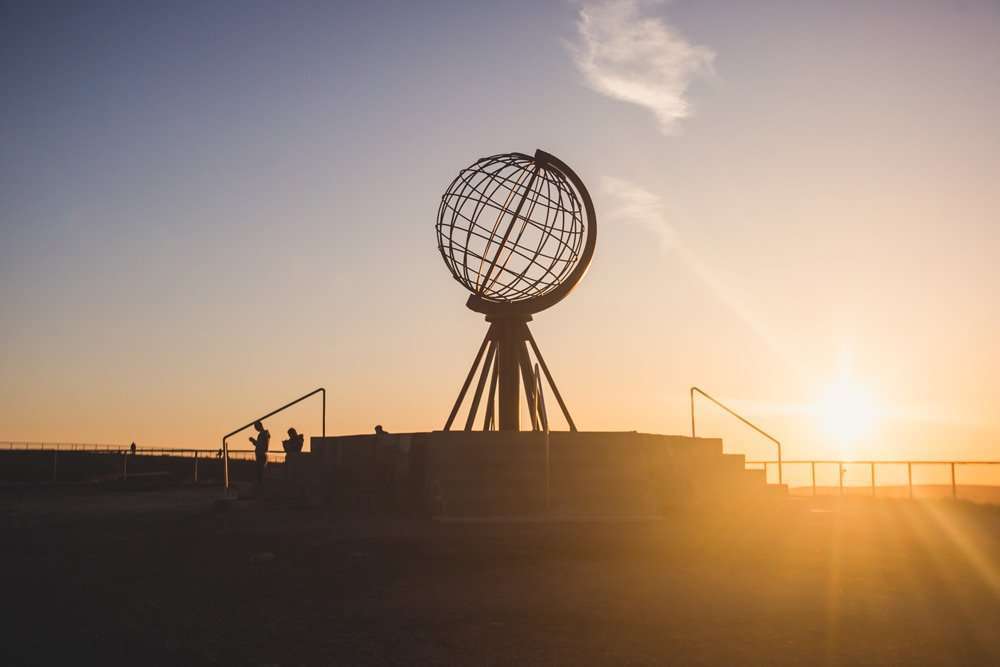
Visitors from across the continent have been drawn to the Nordkapp (North Cape) since the 19th century, to see what lies at the most northerly point in Europe. With two months of midnight sun, the summer (mid May until late July ) is a perfect time to explore that for yourself. And what can you expect to find?
Some pretty amazing views over the Barents sea for a start. But you can also wander around pretty fishing villages, learn about viking history, witness rugged landscapes and see an abundance of birdlife – including puffins and cormorants at the Gjesværstappan cliffs.
19. Skudeneshavn
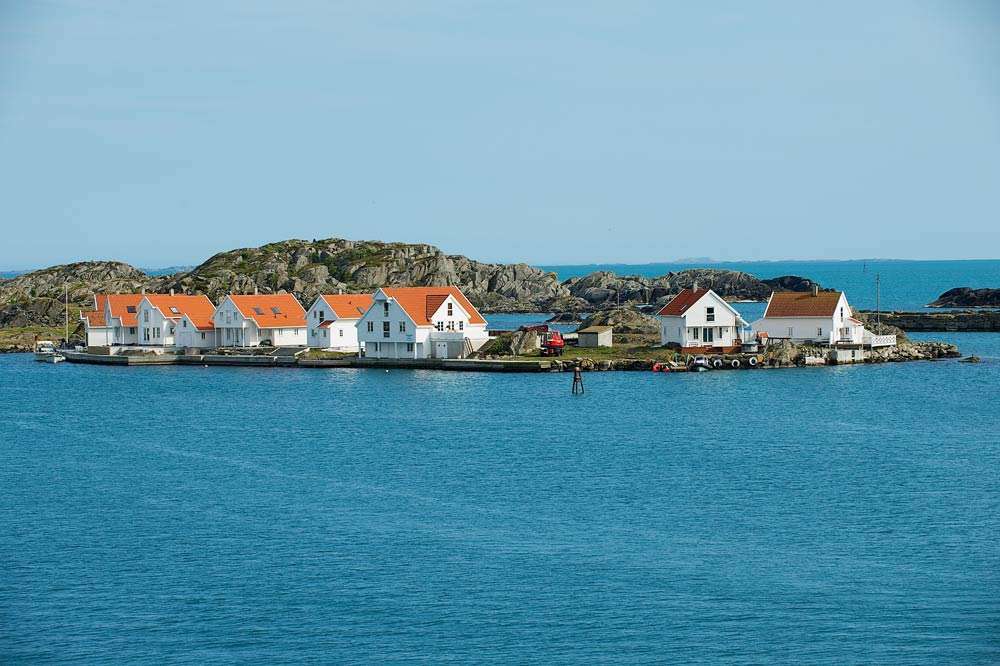
For quaint, scenic small town charm with a nautical vibe, visit Skudeneshavn on the southern tip of the island of Karmøy, western Norway. You can step back in time via the Time Travel app where local characters guide you through the town’s heritage trail filled with pristine, old white buildings with red roofs.
Follow the scent of fresh waffles in the air, in the old town until you get to Majorstuen Kafe for waffles and curiosities. Then take a stroll to The City Park to visit one of Skudeneshavn’s most famous residents, an old ship’s figurehead called The Lady in the Park. The park is also home to another local treasure, the moonstone which is a remnant of rock, originally believed to have been a meteorite, and thought to date back a whopping 800 million years.
The whole Karmøy region is a bit of hidden gem within Norway too – full of beautiful unspoilt beaches, view points, and hiking trails.
20. Fredrikstad
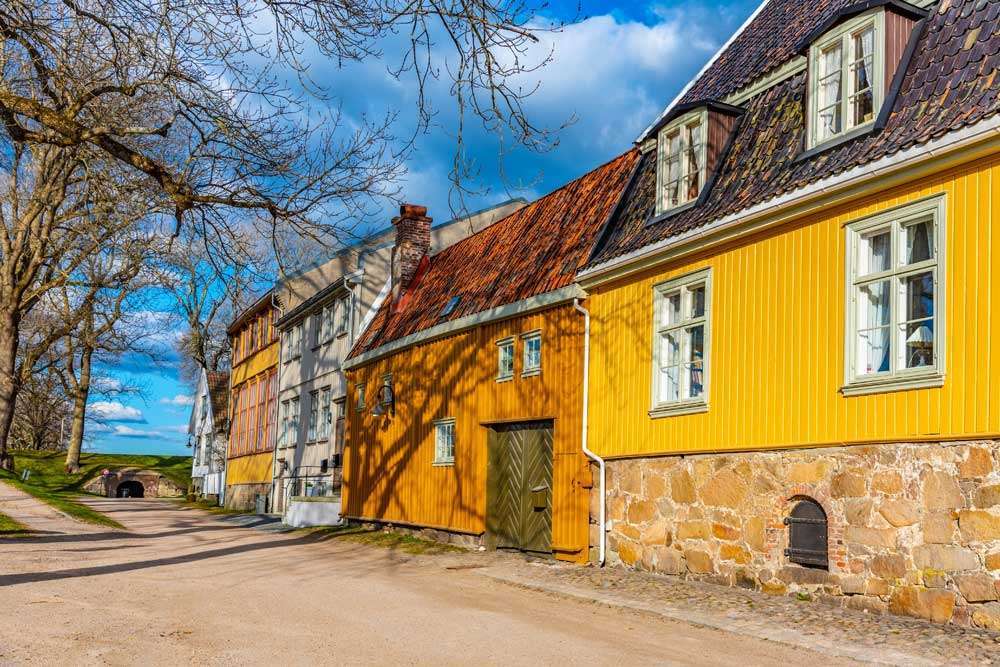
One of Norway’s three fortress cities, Friedrikstad is where the river Glomma meets the Skagerrak, close to the Swedish border. You can visit the old fortress walls, which date back to the 15th century, and find out more about it’s history in the small museum there. The Old Town is filled with charming cobbled streets, small galleries and cosy cafés and bakeries.
The New Town is lively in the summer, where people gather on terraces, particularly if local football team Fredrikstad FK are playing. There are plenty of swimming spots close by too, including Maerappanna, a beautiful nature reserve at a peninsula with rock formations overlooking the Oslofjord. The area is also a gateway to the Hvaler archipelago of over 800 islands and inlets.
21. Mjelle beach, Bodø

The white and red coloured sand of Mjelle beach near the northern town of Bodø is a spectacular place to wander and capture stunning photographs. The sand gets its unusual colour due to tiny gemstone particles (garnet minerals).
It’s also a fairly easy and relaxed hike, perfect for a midsummer trip, where you can wander across the rock walled trails, pack a picnic and swim in the turquoise waters below.
But don’t let the tropical colours fool you – the water is pretty bracing, at around 11-12°C . Wandering around the coastal trails, you’ll also find pretty red huts and probably a few sheep along the way. Although it’s a fairly popular spot, it’s not really crowded so perfect for a day of laid back exploring.
22. Rondane National Park
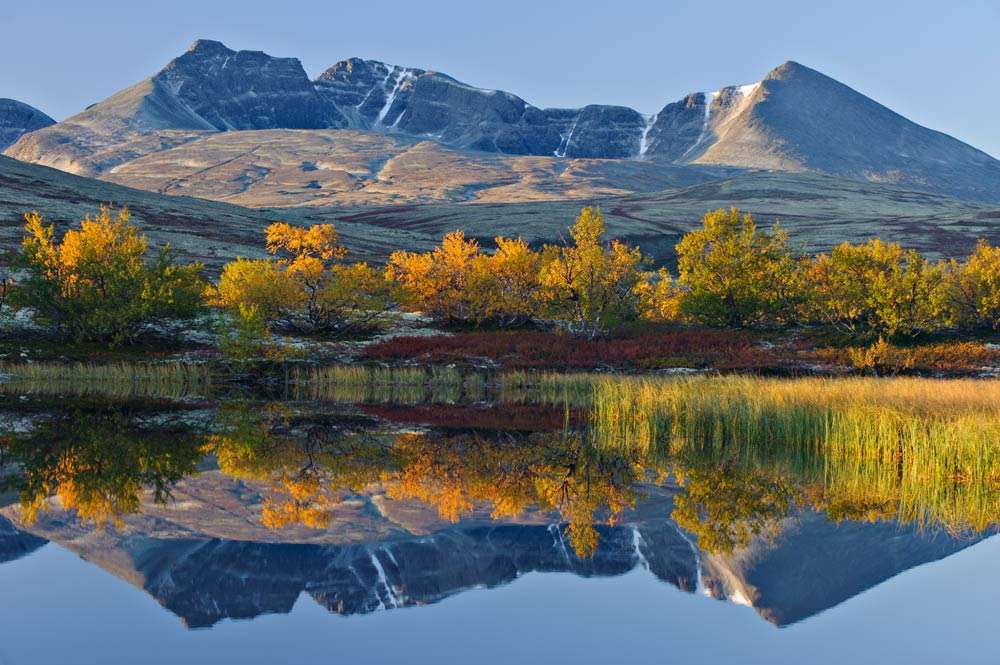
Between Oslo and Trondheim, lies Norway’s oldest National Park. Rondane was established in 1962, and is home to reindeer, very high mountain peaks, rolling hills, old farming villages and Lake Rondvatnet at its centre . There are lots of hiking trails,and easier walks that still deliver on the views front like the Langglupdalen valley.
You can also go horse riding through the mountain forests of Høvringen and Heidal, and go rafting in the river Sjoa – which is also where Olympians train. The landscapes are beautiful during every season, but visit in the winter for cross country skiing, mountain skiing and stunning light for photography.
23. Nigardsbreen
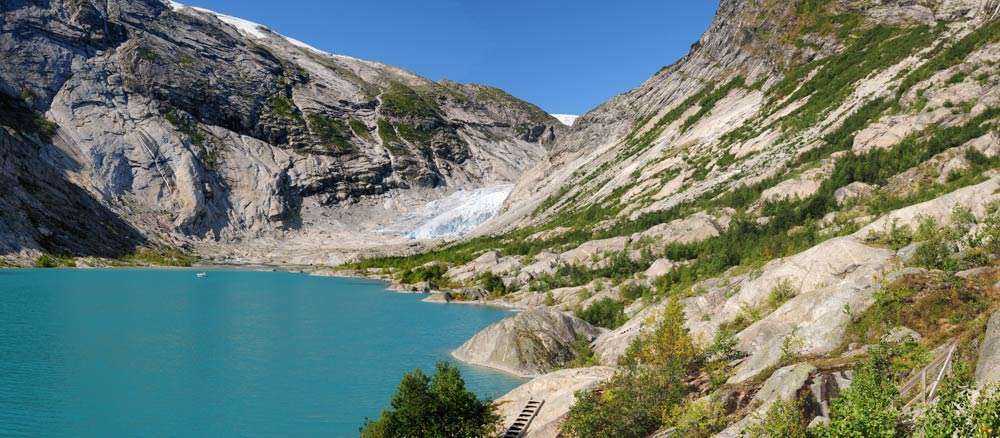
Get up close to one of the most accessible glaciers in Norway. Nigardsbreen in western Norway (between Bergen and Alesund) is actually an arm of Jostedalsbreen – the largest glacier in Europe. The ice reaches almost to the shore, and you can go on guided glacier hikes, exploring the ice in detail and witnessing a stunning Arctic landscape as you go.
Walking down to the blue glacier’s tongue is an incredible sight to behold, especially where rapids crash around it. And you can even walk within the frozen walls of the glacier’s ice tunnels for a pretty unforgettable experience.
24. Skjervøy
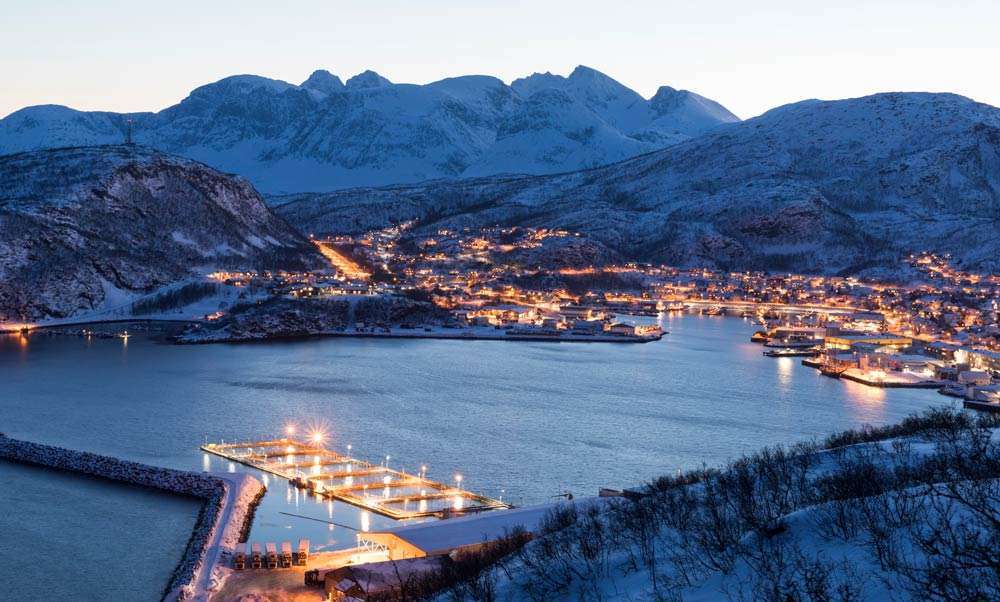
Although Tromso is famous (rightly so) for witnessing the Northern Lights and Whale watching, there are less well known spots in Norway for remote nature appreciation. Skjervøy in the north is an island and fishing community close to mountains which is great for whale watching and other outdoor activities like skiing.
It’s also a significant location in maritime history – Skjervøy was also the first port of call made by the Arctic explorer Fridtjof Nansen’s Fram ship on its return from an expedition to the North Pole in 1896. These days, people come to see Orcas and humpback whales in the wintertime, stay in cosy cabins (and you can rent saunas) and even rent boats to go fishing too.

The adventurous railway isn’t the only reason to visit this beautiful village, it’s worth exploring at ground level too – particularly for cycling and hiking. You can also take a boat ride down the UNESCO World Heritage site Nærøyfjord for dramatic landscapes and an abundance of waterfalls.
You can also meet some modern day Vikings at the Viking Valley in Guvagen – they’re so into that era of history they live the same way (well, not all aspects of their lifestyle, obvs!).
Greenland Travel Guides

Skiing From West to East Greenland
Explorer Mariano Curiel skis across Greenland, covering the world's harshest terrain, facing dangerous rivers and…
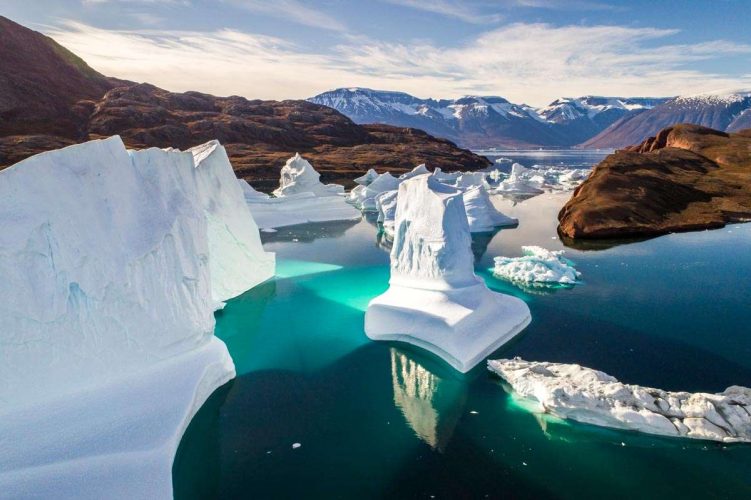
Greenland Travel Guide – An Overview of All Regions In Greenland
Discover all of Greenland's diverse regions with our comprehensive travel guide, highlighting the reasons to…
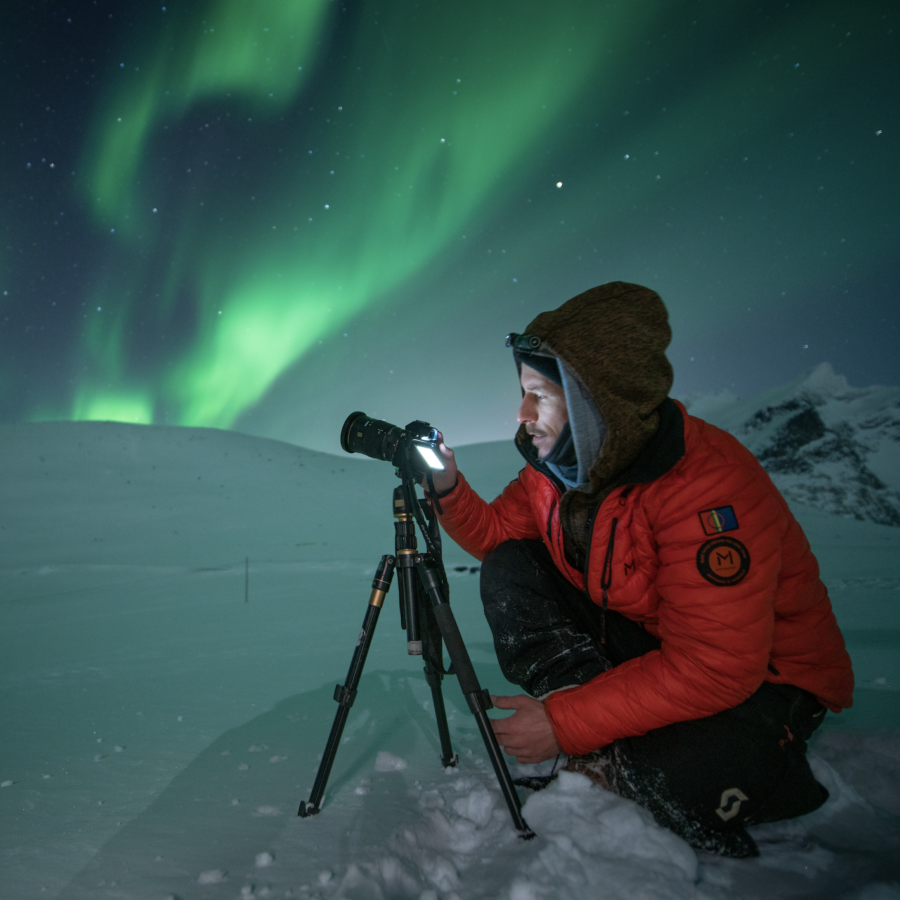
Northern Lights Photography – An Expert’s Guide with Top Tips
Join photographer Virgil Reglioni to capture the magic of the Northern Lights. Learn about camera…
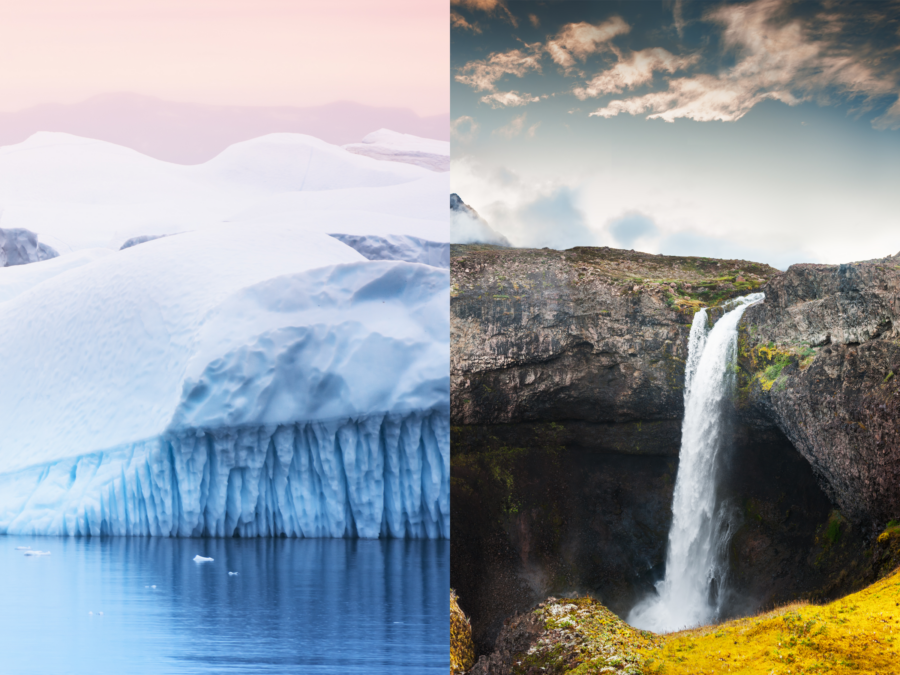
Weather and Climate of Greenland & Best Time to Visit
Our guide provides information about Greenland's weather and climate conditions, along with tips on the…
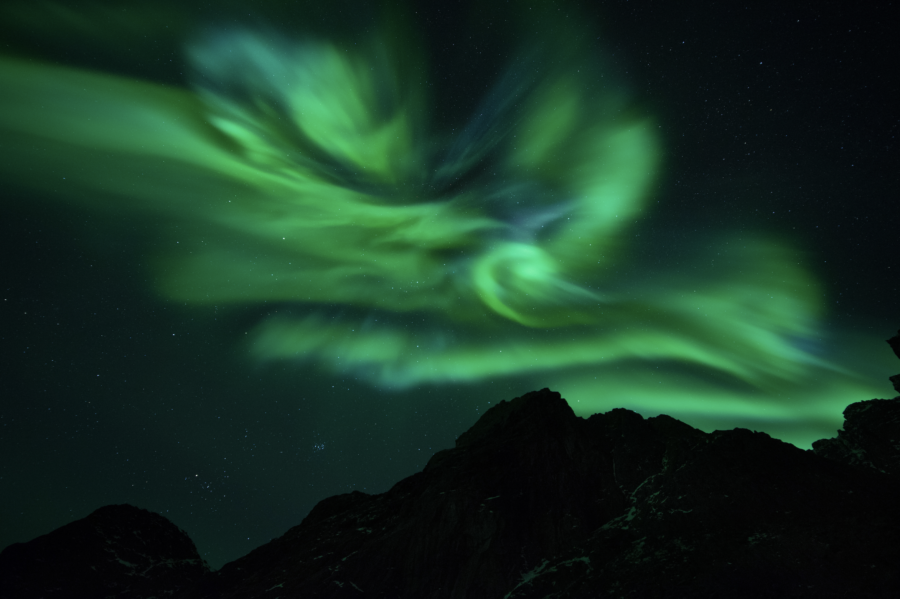
Northern Lights in Greenland – Ultimate Viewing Guide & Top Tips
This guide provides you with all the info about when, where, and how to observe…

Scoresby Sund – A Guide to the World’s Biggest Fjord System
Are you interested in exploring Scoresby Sund in East Greenland? Check out our comprehensive guide…

The Ultimate Photographer’s Guide to West and East Greenland
Discover Greenland photography tips with expert photographer Chase Teron and learn to capture the different…

Animals of Greenland – The Ultimate Guide to Greenland’s Wildlife
Greenland is home to a diverse range of wildlife, including polar bears and narwhals. This…
9 things to know before going to Norway in 2024
Mar 18, 2024 • 6 min read

These insider tips will help you plan the Norway trip of a lifetime © Alexander Spatari / Getty Images
Norway is a wonderful country to experience as a first-time visitor – an efficient and extensive transport network, incredible attractions, breathtaking scenery and relaxed locals all add up to the trip of a lifetime.
But there are still some things that are good to know in advance. For example, Norway is one of the most expensive countries on the planet, so money-saving tips will make all the difference to your travel budget.
Another major influence on your trip will be the flow of the seasons ; the differences can be extreme and will have a major impact on what you plan to do while you're there, both in terms of climate and strange Arctic phenomena such as the midnight sun and the northern lights .
Here are nine things you need to know to ensure a wonderful trip to Norway.

1. Outdoor activities are seasonal so plan carefully
Seasons are everything in Norway. Each long summer day might feel like it lasts forever, but the window for many activities rarely lasts longer than the June-to-August (sometimes just July-to-August) periods. This especially applies to hiking – Norway’s intensely beautiful Besseggen Ridge Trail, in Jotunheimen National Park , can draw 30,000 hikers in just two months.
Some trails remain open beyond summer, but you run a serious risk of extreme weather rolling in with very little warning while you’re out there. Cycling just about anywhere, and white-water rafting on the Sjøa River, are also strictly summer-only.
Winter sports like skiing, snowmobiling and dog sledding have a similarly narrow opening, although dog sledders can sometimes take a summer ride on a sled with wheels. It all means that planning is essential, and local tourist offices are an excellent resource for knowing what’s possible and when.
2. Eat well on a budget
Prices for a meal in Norway can be eye-wateringly high: in a decent restaurant, a main course for Nkr500 is somewhere close to the norm. Thankfully, the best Norwegian cooking is almost always worth it, but keep these sorts of prices for a special occasion, or even just dinner.
Most Norwegian hotel buffet breakfasts are extraordinarily good, overflowing in generous proportions, and – best of all – usually included in your room rate. Take full advantage and you may well not need to eat again until the evening. If, on the other hand, you’re hungry again by lunchtime, many cafes have cheaper lunch specials and lighter meals, or you could plan for a picnic with food sourced from a supermarket and its delicatessen.
Snacking at fish markets, or with one of the hot dogs sold at every Norwegian petrol or gas station, could also fill you up without sending a torpedo through your daily budget. Saving money on other meals will make that dinner bill a little less painful.
3. Buy train and bus tickets online
Norway's transport network is efficient and extensive. If you’re traveling by rail, you’re in for a treat with some of northern Europe’s most scenic rail journeys . But whatever you do, don’t pay full fare: Norwegians rarely do. On almost every route, Norwegian state railways set aside a limited number of discounted (minipris) tickets. How much you pay has everything to do with how early you book, so start planning as soon as you have firm dates for your trip, even if it’s months in advance. Of all the bus services on offer across the country, Lavprisekspressen is known for its rock-bottom fares along major routes – book online and book early.

4. Join a hotel loyalty scheme
The overwhelming majority of Norwegian hotels belong to a hotel chain, or at least to some more loosely affiliated groupings. Joining one of their loyalty programs is always free, so choose as many as you like. Better still, join one and then find hotels along your route that belong to your program. The best such programs have a simple offer: the more nights you stay – just how many varies from one chain or program to the next – the more free nights you get as a reward for your loyalty.
Another option that is becoming increasingly common, especially in cities, is budget hotels. Before it was just the hostels (vandrerhjem) that promised reasonable prices, but increasingly, slick hotel-hostel hybrids like Citybox and Smarthotels provide respite from the sky-high room rates.
5. Bring a sleeping mask in summer
Let’s face it, Norway’s midnight sun (which can mean 24 hours of daylight for months on end) and polar night (the same, but with endless darkness) can be confusing or frustrating. At first, it can be exciting to walk alongside a beautiful fjord in brilliant 3am sunshine and there is considerable novelty to eating lunch under a night-dark sky. But how do you sleep in summer? Many hotels, particularly in Norway’s north, have heavy-duty, light-blocking curtains, but bring a sleeping mask in summer to ensure you get some shut-eye.
6. Norwegians are tolerant, but always be considerate
Norwegians are pretty relaxed about most things, and you’d be hard-pressed to find a more tolerant nation of people. In cities in particular, the guiding principle seems to be to have a good time as long as you’re not hurting anyone. In rural areas, it’s slightly more complicated, but only slightly. There are always exceptions, but Norwegians in small towns and remote areas tend to be more socially conservative. Loud and loutish behavior is rarely welcome in such places, and if you have an all-night party in a small village, you’ll have misread your surroundings and taken Norwegians’ famous tolerance too far.

7. Driving will take longer than you expect
Many of Norway’s roads are engineering marvels, taking you places no road should go. Norway has the longest tunnels in the world and curvaceous bridges that render water obsolete as an obstacle, and car ferries take care of the rest. So rare are potholes, that people take photos of them. Just don’t expect to go very fast.
Part of that has to do with the terrain. It’s also because, apart from a short distance on either side of major cities, freeways are as rare as potholes. Throughout much of the country, especially in summer, you’ll share the road with trucks and campers with only semi-regular overtaking lanes to ease the frustration. Count on slowing down, enjoying the view, and averaging no more than 60km/h (37mph) on most journeys, longer if you stop along the way.
8. Take basic safety precautions
Norway is an extremely safe place in which to travel, possibly even one of the safest in Europe. Like any large modern city, pickpockets are always a possibility in popular tourist areas, especially Oslo and around the Torget area of Bergen . Here and elsewhere, keep your valuables hidden, and never leave them visible in an unattended car. As long as you’re sensible in ways such as these, you and your personal belongings may well be safer in Norway than they are back home.
9. Watch the weather
Watching the nightly weather bulletin with rapt attention isn’t some quirky little pastime in Norway: it could just save your life. Even in summer, wild weather can roll in without warning, which is fine if you’re curled up next to a roaring fire, less so if you’re hiking in Hardangervidda or Jotunheimen, or snowmobiling in Svalbard .
Whenever you’re heading out into any Norwegian wilderness, wise precautions include always carrying warm wet-weather gear, as well as emergency water and food. And always let someone (either your hotel or the local tourist office) know where you’re going and when you expect to be back.
This article was first published Jul 25, 2023 and updated Mar 18, 2024.
Explore related stories

Aug 6, 2024 • 7 min read
Norway's arctic archipelago is both home and workplace to local influencer Cecilia Blomdahl. Here are her tips for a perfect trip to Svalbard.

Jun 12, 2024 • 10 min read

Jun 12, 2024 • 12 min read

Mar 30, 2024 • 4 min read

Mar 20, 2024 • 8 min read

Mar 18, 2024 • 5 min read

Mar 14, 2024 • 7 min read

Jan 19, 2024 • 11 min read

Dec 27, 2023 • 8 min read

Dec 1, 2023 • 6 min read
More From Forbes
How stavanger became norway’s street art capital.
- Share to Facebook
- Share to Twitter
- Share to Linkedin
Joining a street art tour is a great way to dive into the culture in Stavanger, Norway.
Aside from being Norway’s energy industry hub, Stavanger is also renowned for its picturesque white, wooden houses. These charming structures, numbering in the thousands, are scattered throughout the city, with a particularly high concentration in the historic district of Gamle Stavanger.
The city's pristine white facades create a timeless, quaint atmosphere. Yet, amidst this traditional setting, a vibrant street art scene has emerged, infusing Stavanger with a burst of color and creativity. This striking contrast between the classic wooden houses and the bold expressions of street art adds a distinctive character to the city.
How Stavanger’s Street Art Scene Began
Driven largely by the Nuart festival, Stavanger's street art scene is vast and varied. The city’s street art ranges from vast eye-catching murals to more subtle work designed to blend in or interact with the physical environment.
Fine Art graduate Martyn Reed moved from London to Stavanger in 1995, and that’s where the story starts.
Eye-catching street art can be seen all over Stavanger, Norway.
“I was part of a loose art collective whose practice explored concepts of power, who had it, how did they use it and who did they share it with. I was naturally drawn to working in public space although the concept of street art hadn’t yet taken hold,” says Reed.
Today’s NYT Mini Crossword Clues And Answers For Thursday, August 22
Oprah endorses kamala harris at dnc: her political history—and rare endorsements—explained, bill clinton takes crack at trump’s hannibal lecter references in dnc speech.
But it wasn’t until six years later when Reed discovered the work of Banksy at an event that things began to develop. He was surprised at the lasting impact the meeting had on him: “I thought if this work could do this to me, it could do it to anyone. I returned to Stavanger and established Nuart the same year.”
Reed eventually assumed responsibility for curating Nuart, and notes that once the festival shifted its focus exclusively to street art, the impact on the city was immediate.
Street art in central Stavanger, Norway.
“Unlike some major metropolises, there was no negative connotations attached to the culture because it was so different stylistically to tagging and graffiti. The city took to it immediately and we were able to curate the city in a very free and thoughtful way,” says Reed.
Nuart blossomed, unimpeded by bureaucracy or politics, and enjoyed its “golden years” from 2006 to 2016. Stavanger hosted most of the world’s leading names in street art, including Dotdotdot, Dolk, and Martin Whatson, with many of those works still visible in the city today.
A Commercial Break
However, the surging popularity of the more commercial aspects of the culture took hold on the scene. Together with the pandemic, it impacted Nuart’s ability to produce a festival, so the team put their initiative on hold .
Visitors arriving into Stavanger by cruise ship are greeted by this mural.
Nuart did continue to exist in the form of the Nuart Journal , a peer-reviewed journal with an immediate, open-access policy.
Nuart Returns To Stavanger
This year, Reed has announced plans to resurrect Nuart. He says the new body of work aims to “challenge the ‘Disneyfication’ of the culture in a thoughtful and entertaining way.”
A “back to basics” series of works, residencies and projects are set to be produced between September and December. The first glimpses are already visible on the streets, but you’ll need to look down to see them.
Rats, cats, and crows are among the street-level artworks to pop up so far. According to Reed, the crow signifies transformation and rebirth, something street art culture “desperately needs after a decade of ‘by the book’ mural festivals sponsored by corporate property developers.”
Nuart Festival has returned to the streets of Stavanger with small pieces that interact with the ... [+] physical environment.
At the time of writing, Nuart Festival’s Instagram account is the best place to see the unveiling of this new series, piece by piece.
It states: “although we’ll continue to applaud the technical and artistic skills of large scale murals and their place in the culture, we’re happy to be putting the cherry pickers away and bringing it back down to street level, to the grime and the dirt that created this pearl of a culture in the first place.”
Stavanger’s Top Street Art Locations
Local street artist ‘Algebra’ shared her recommended spots with Visit Norway , but explained that this will change over time: “The pieces are usually not meant to last forever. They're supposed to be covered up with new ones over time. The general rule is, the cooler the art, the longer it stays.”
Just wandering around Stavanger is the best way to experience the street art. Reed says doing this is how you’ve discover multiple smaller works that tours often miss.
That being said, he also recommends the tours offered by Region Stavanger and Guide Companiet , which offer an “excellent introduction” to the street art scene for people short on time.
Don’t Miss Norway’s Most Colorful Street
In stark contrast to the white buildings that define much of central Stavanger, Øvre Holmegate—known locally as Fargegaten (the Color Street) — bursts with color.
'Øvre Holmegate' is packed with colorful buildings.
In 2005, the street was just like any other until a local hair stylist wanted a more vibrant environment to attract more people to his salon—and other businesses on the street.
The street’s design seems haphazard at first glance, but the color combinations are actually the design of Scottish artist Craig Flannagan.
Join locals for a coffee early in the afternoon in one of the many sidewalk cafes, or visit later for a livelier atmosphere.

- Editorial Standards
- Reprints & Permissions
Join The Conversation
One Community. Many Voices. Create a free account to share your thoughts.
Forbes Community Guidelines
Our community is about connecting people through open and thoughtful conversations. We want our readers to share their views and exchange ideas and facts in a safe space.
In order to do so, please follow the posting rules in our site's Terms of Service. We've summarized some of those key rules below. Simply put, keep it civil.
Your post will be rejected if we notice that it seems to contain:
- False or intentionally out-of-context or misleading information
- Insults, profanity, incoherent, obscene or inflammatory language or threats of any kind
- Attacks on the identity of other commenters or the article's author
- Content that otherwise violates our site's terms.
User accounts will be blocked if we notice or believe that users are engaged in:
- Continuous attempts to re-post comments that have been previously moderated/rejected
- Racist, sexist, homophobic or other discriminatory comments
- Attempts or tactics that put the site security at risk
- Actions that otherwise violate our site's terms.
So, how can you be a power user?
- Stay on topic and share your insights
- Feel free to be clear and thoughtful to get your point across
- ‘Like’ or ‘Dislike’ to show your point of view.
- Protect your community.
- Use the report tool to alert us when someone breaks the rules.
Thanks for reading our community guidelines. Please read the full list of posting rules found in our site's Terms of Service.

IMAGES
COMMENTS
Read this exciting short history of tourism in Norway. The travel agency Thomas Cook created the Discovery Route as the very first package holidays to be sold in Fjord Norway. Horse and carriage on land and steamboats on the fjords and the inland lakes was the means of the first explorers. The famous traveler, explorer and writer E. J. Goodman ...
Tourists began coming to Norway in the 1820 and 1830s, but the country wasn't prepared for tourism at that stage with limited options for overnight stays. This quickly began to change as Norway saw a greater influx of travelers towards the end of the 19th century, and the country began placing a greater focus on providing hospitality and ...
As of 2019, Norway ranks 22nd in the World Economic Forum's Travel and Tourism Competitiveness Report. Tourism in Norway contributed 4.2% of the gross domestic product as reported in 2018. Every seven in a hundred people throughout the country work in the tourism industry. Tourism is seasonal in Norway, with more than half of total tourists visiting between the months of May and August.
Norwegian history in a nutshell. Discover the key dates and events in the long history of Norway with this handy timeline. Modern Norway has only existed as a truly independent nation since 1814. But the history of the land is a long and fascinating one. Many people know about the Vikings and the oil age, but there are so many more stories to tell.
5. Kristiansand Canon Museum. The Kristiansand Cannon Museum stands at the site of the Møvik Fort, Norway, a huge defence battery built by the Germans during their occupation of Norway and Denmark during the World War Two. Today, visitors to the site can explore the wider complex, delve into bunkers and tunnels, and of course, see the main gun ...
Holmen 12. 6899 Balestrand. Phone: +47 474 53 053. Email: [email protected]. Website: misf.no/norsk-reiselivsmuseum. The Norwegian Museum of Travel and Tourism is a unique, digital and modern museum that delves into the history and development of leisure travel in Norway....
From stunning fjords to ancient ruins, this travel guide will take you on a journey through one of the most fascinating periods in Norwegian history. Norway was once home to some of the fiercest and most skilled seafarers in the world. The Vikings, known for their legendary longships and fearsome reputation, left an indelible mark on Norwegian ...
Norway recorded a total of one million tourists in 2020, ranking 82nd in the world in absolute terms.In 2020, Norway generated around 2.20 billion US dollars in the tourism sector alone. This corresponds to 0.46 percent of its the gross domestic product and approximately 24 percent of all international tourism receipts in Northern Europe.
More than 100 years of travel history. In the 1880s the travel agency Thomas Cook, created the Discovery Route as the very first package holidays to be sold in Fjord Norway. The first explorers of the Discovery Route travelled by horse and carriage, and by steamboats on the fjords and the inland lakes. The route was also marketed as «The new ...
The history of Norway spans thousands of years, but some key moments and events have played a significant role in shaping the nation we know today. These include the following: The Viking Age (c. 793-1066): During this period, Norwegian Vikings ventured across vast areas of Europe, earning a reputation as formidable warriors and skilled ...
There were a total of 33.3 million commercial overnight stays in 2017, which is more than ever before and an increase of 1 percent from the previous year. The number of international tourist arrivals* at Norwegian hotels grew by 2 percent to 9.9 million, which is 221,744 more than in 2016. *Tourist arrivals include figures for holiday, leisure ...
Top 5 countries to visit Norway as tourists ranked: Germany, Netherlands, Sweden, Denmark and the United States. Total tourism consumption: 194.3 billion Norwegian kroner (roughly $18.7 billion USD). People employed in the tourism sector in Norway: 182,900 people. Average sum of money spent per day per tourist: 1,680 NOK ($163 USD).
Fjord Norway. Viking fans have lots to look forward to in Fjord Norway. At the modern Viking museum Sagastad in Nordfjordeid, visitors can explore the 30-metre-long Myklebust ship, enjoy interactive exhibitions, and learn more about the region's proud Viking history. Viking house, located in the heart of Stavanger, is another groundbreaking concept.
Viking history and culture. The Viking Age began in the year of 793 with an attack on the Lindisfarne monastery in England, which is the first known Viking raid. The event that marks the end of their glory days is the slaying of King Harald Hardrada at the Battle of Stamford Bridge in 1066. Raids, looting, colonisation, and trade brought the ...
Table of Contents. Best Things to Do in Norway. #1 Explore the Fjord Region. #2 Norway in a Nutshell. #3 Pose for Photos on Trolltunga. #4 Visit Historic Bryggen. #5 Road Trip through the Lofoten Islands. #6 Explore Oslo. #7 Drive the Atlantic Road.
5. Norway is a Safe Country to Visit. Norway is known to be one of the safest countries in the world. Crime rates are extremely low even in major cities such as Oslo, Bergen, Trondheim, and Stavanger . As with any other urban areas, you should take certain precautions but there's not much to be afraid of.
Trollstigen. The Northern Fjords. This twisting, sky-topping corkscrew of a road is the most famous stretch of tarmac in Norway. Completed in 1936 after eight years of labour, the Troll's….
Back down on mainland Norway, the western region—also known as Fjord Norway—is a popular tourist destination. 7. Bryggen, Bergen. There's so much to see in Norway's second biggest city but most tourists start at the UNESCO World Heritage site Bryggen. This collection of wooden buildings built around narrow alleyways and cobbled squares ...
23. A Country of Glaciers. Norway's landscape is dramatically marked by numerous glaciers, including the Jostedalsbreen, the largest glacier in continental Europe. These icy giants are not only a testament to the country's ancient geological history but also a draw for tourists and scientists alike.
The port city on Norway's south west coast is surrounded by mountains (including Pulpit Rock) and beaches. Take a wander around the historic Gamle Stavanger (Old Stavanger), to explore lots of little museums where you can learn about things like viking history, as well 18th and 19th century wooden houses.
9 things to know before going to Norway in 2024. Norway is a wonderful country to experience as a first-time visitor - an efficient and extensive transport network, incredible attractions, breathtaking scenery and relaxed locals all add up to the trip of a lifetime. But there are still some things that are good to know in advance.
Travel better in Norway. There are more than a thousand fjords in Norway, all along the coast. ... There are many fascinating historical sites for history buffs, ruins of ancient buildings, art and folklore museums, open-air museums, and Viking Era sites. Unesco World Heritage sites include Bryggen in Bergen, Urnes Stave Church, the fjords of ...
Joining a street art tour is a great way to dive into the culture in Stavanger, Norway. Ruben Soltvedt / Fjord Norway. Aside from being Norway's energy industry hub, Stavanger is also renowned ...
Discover Norway's stunning nature, cosy cities, and northern lights. Find great offers, insider guides, and tips for sustainable travel.
Zillow has 38 photos of this $365,000 3 beds, 2 baths, 1,609 Square Feet single family home located at 401 Norway Ct, Staples, MN 56479 built in 2024. MLS #6589761.